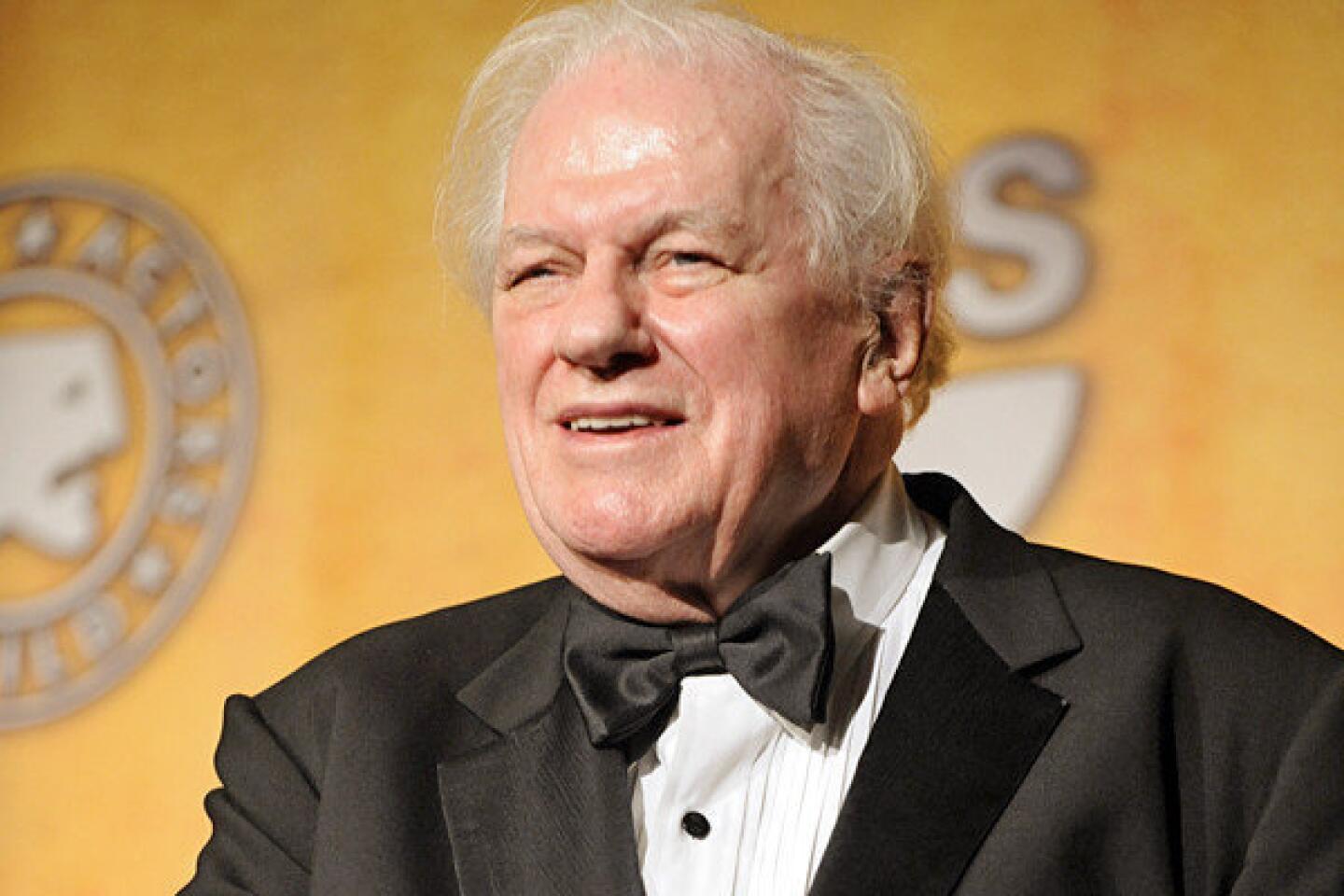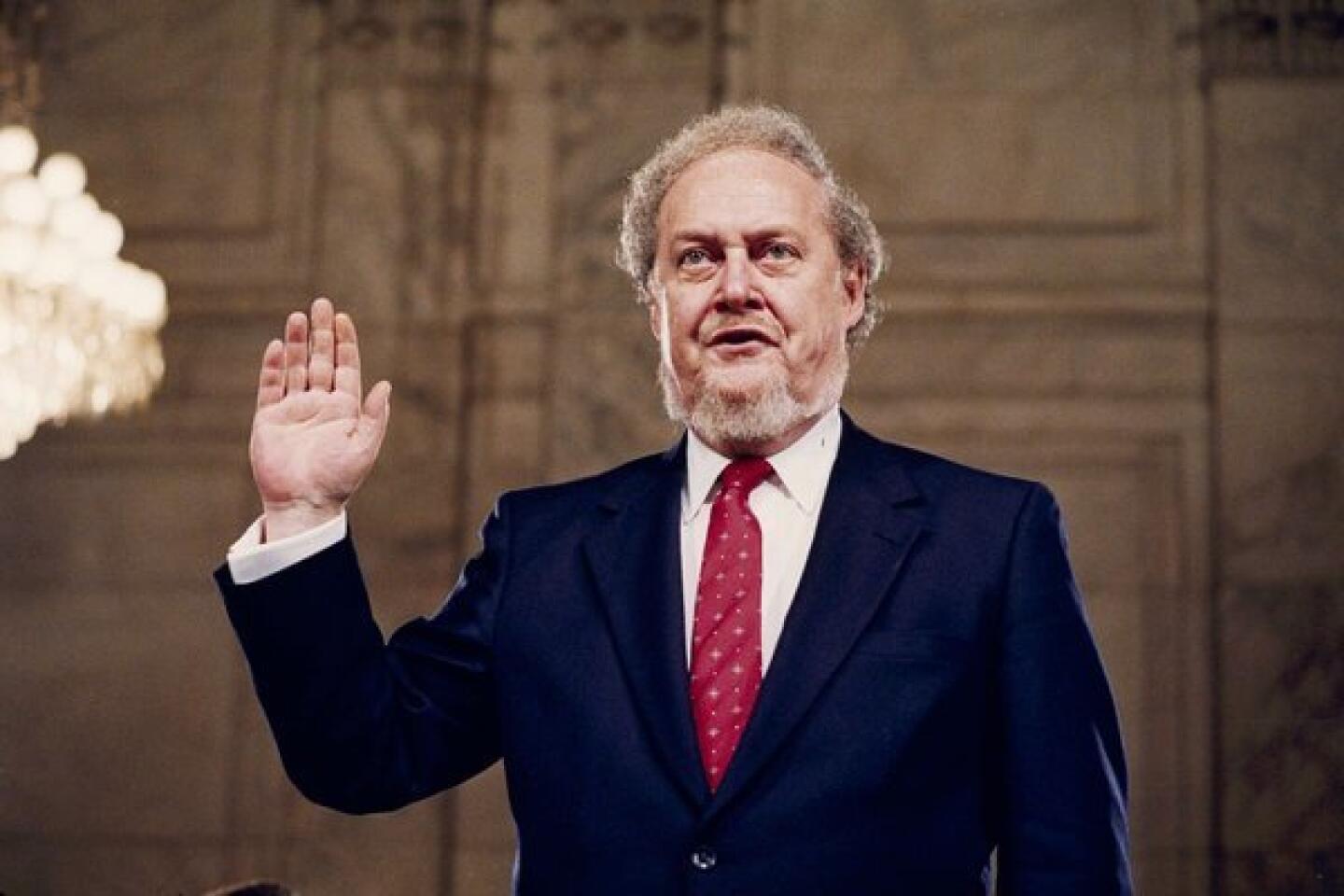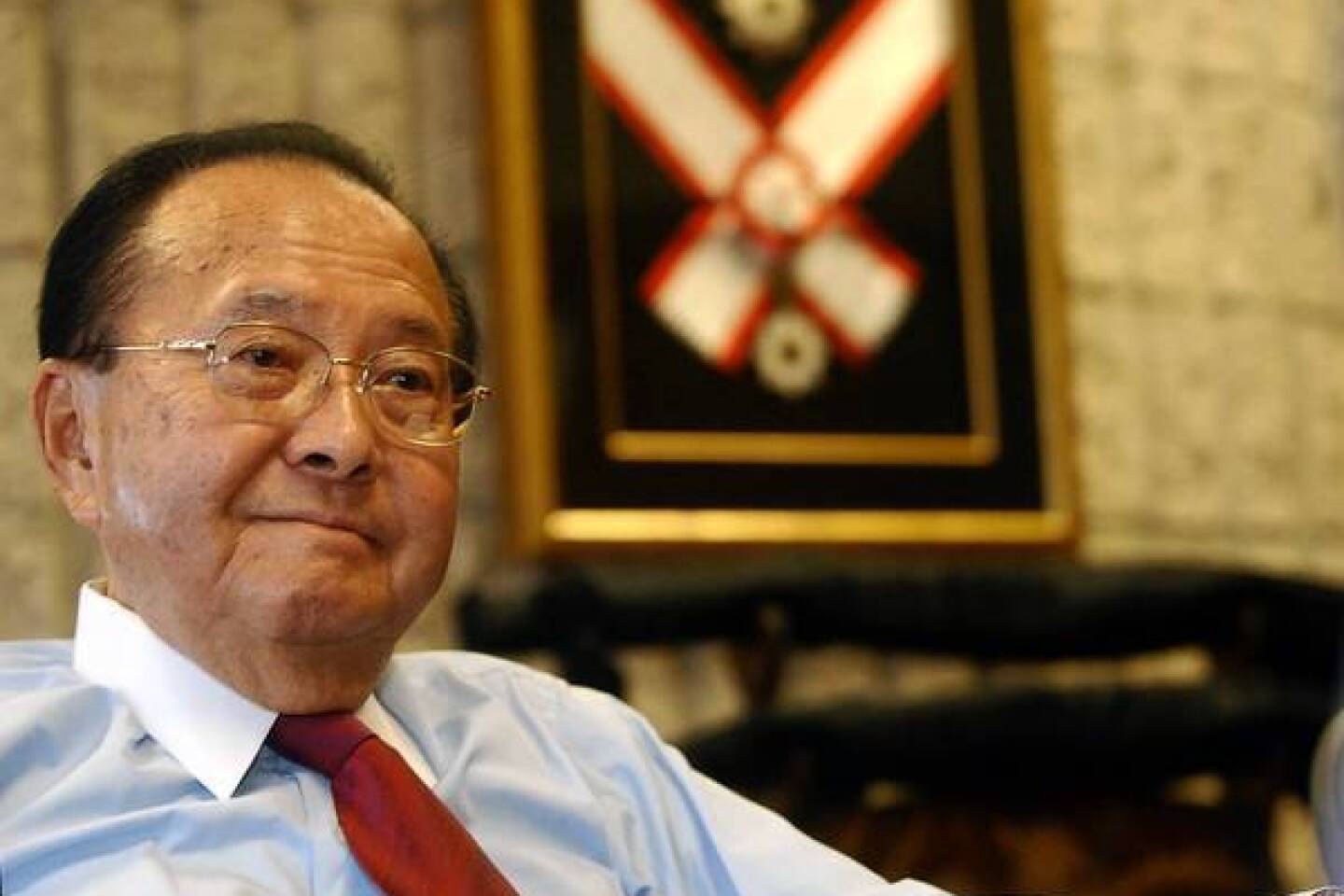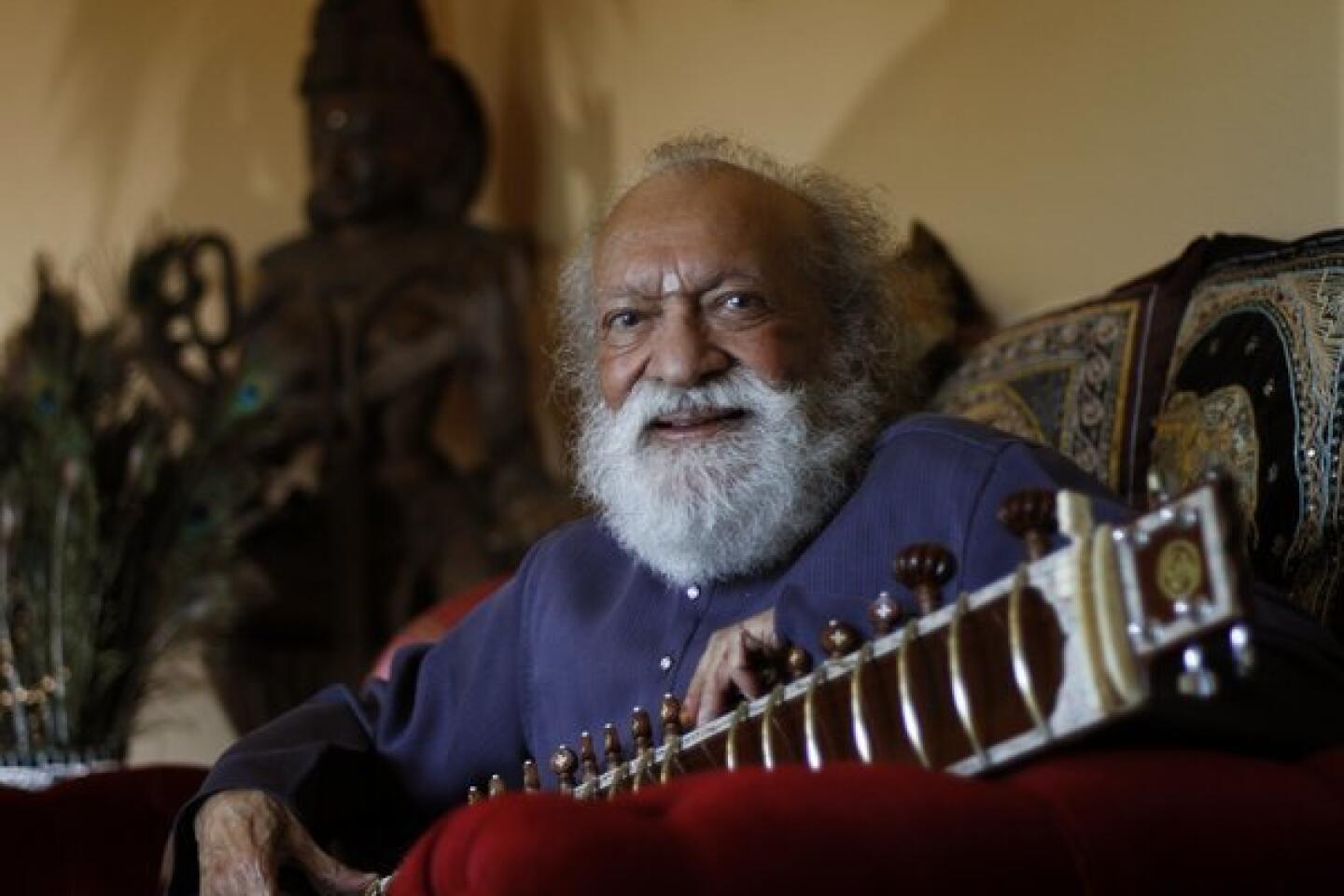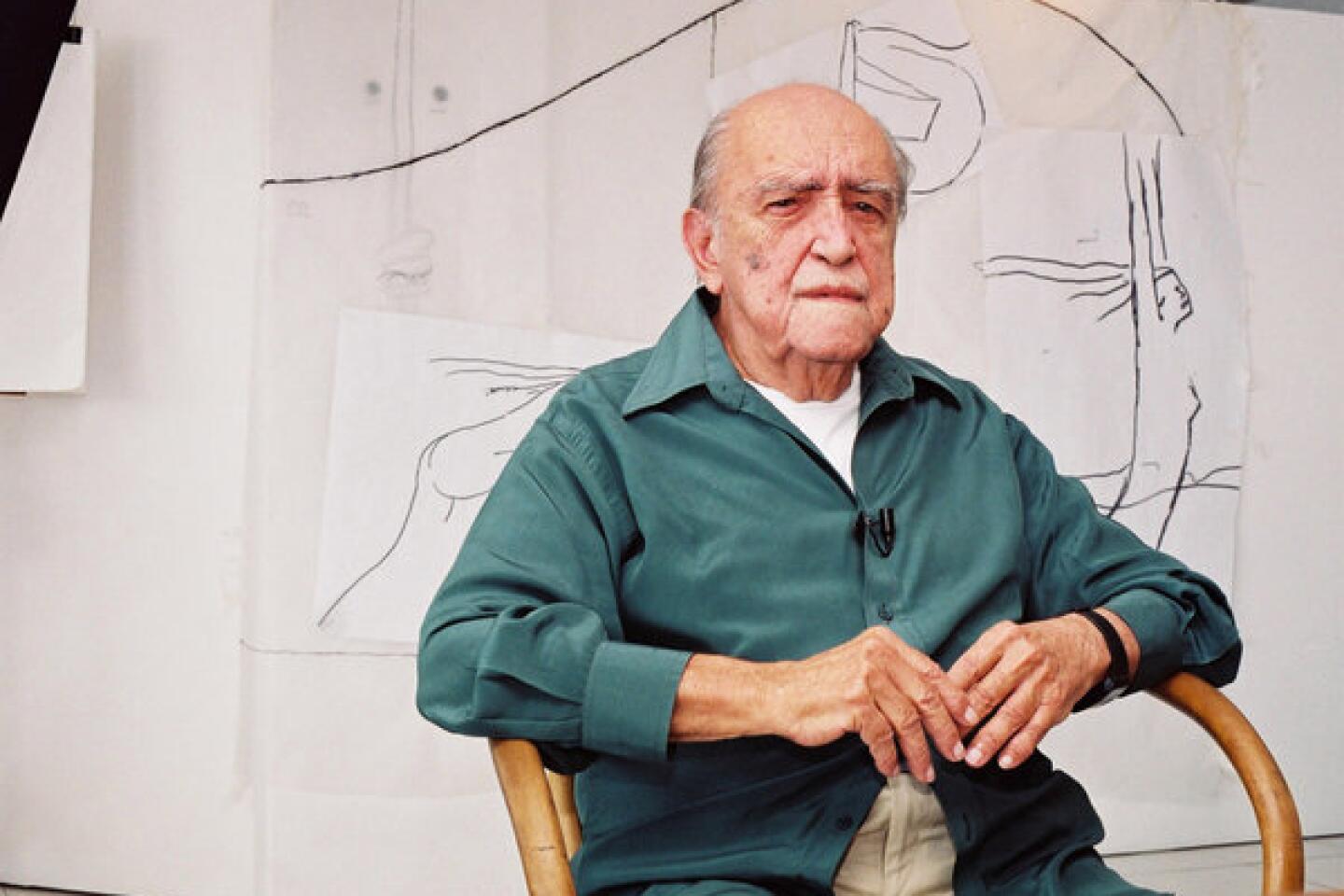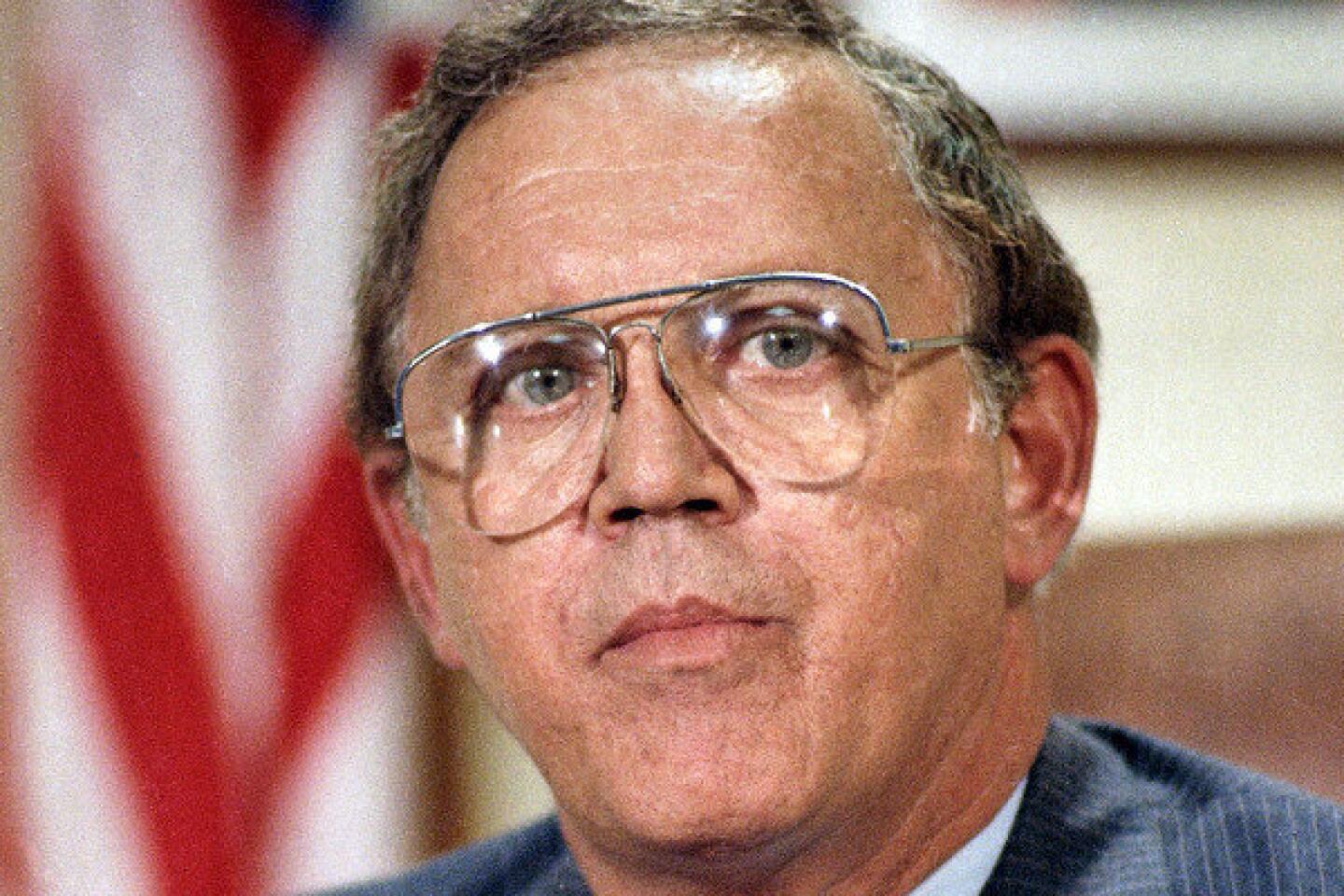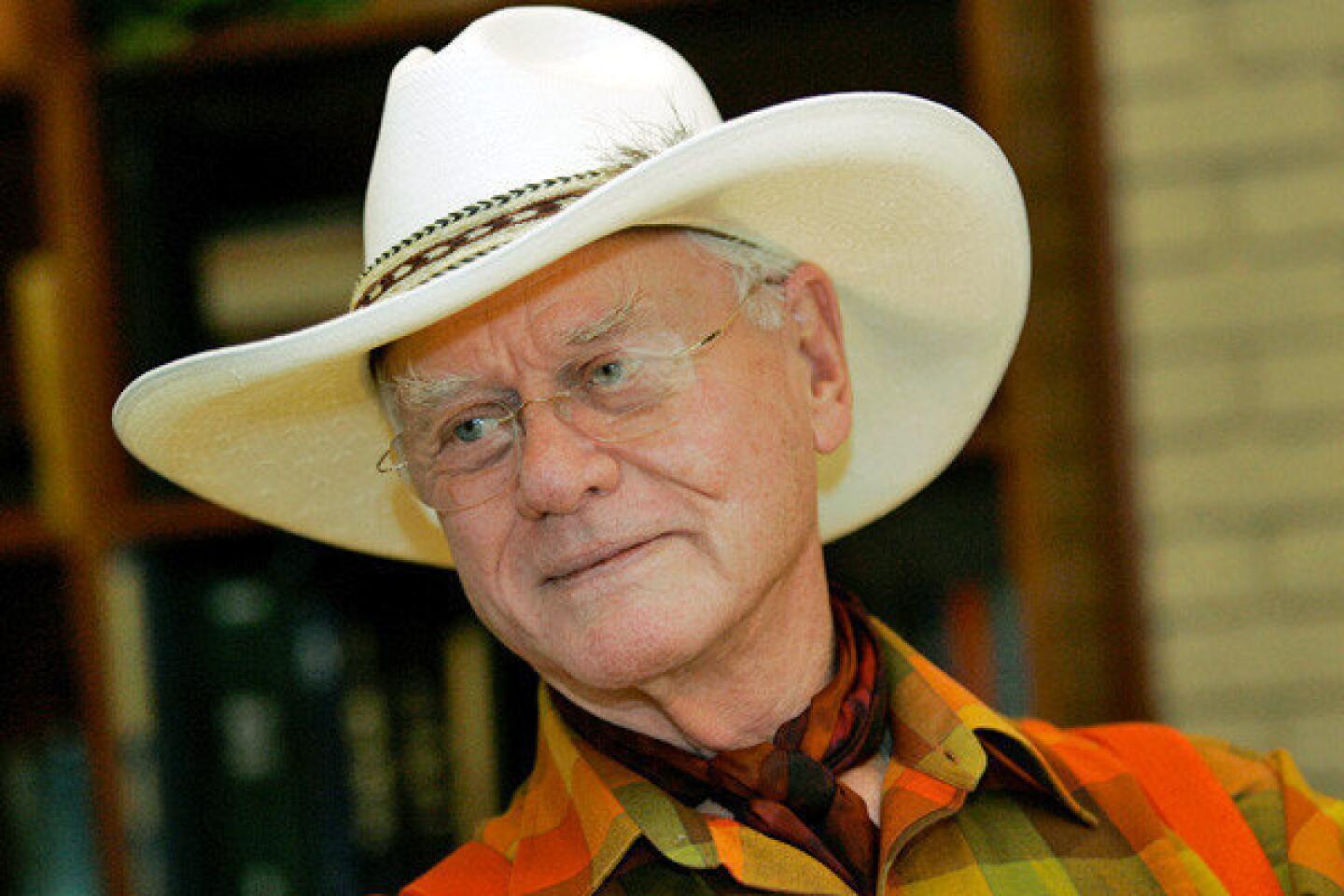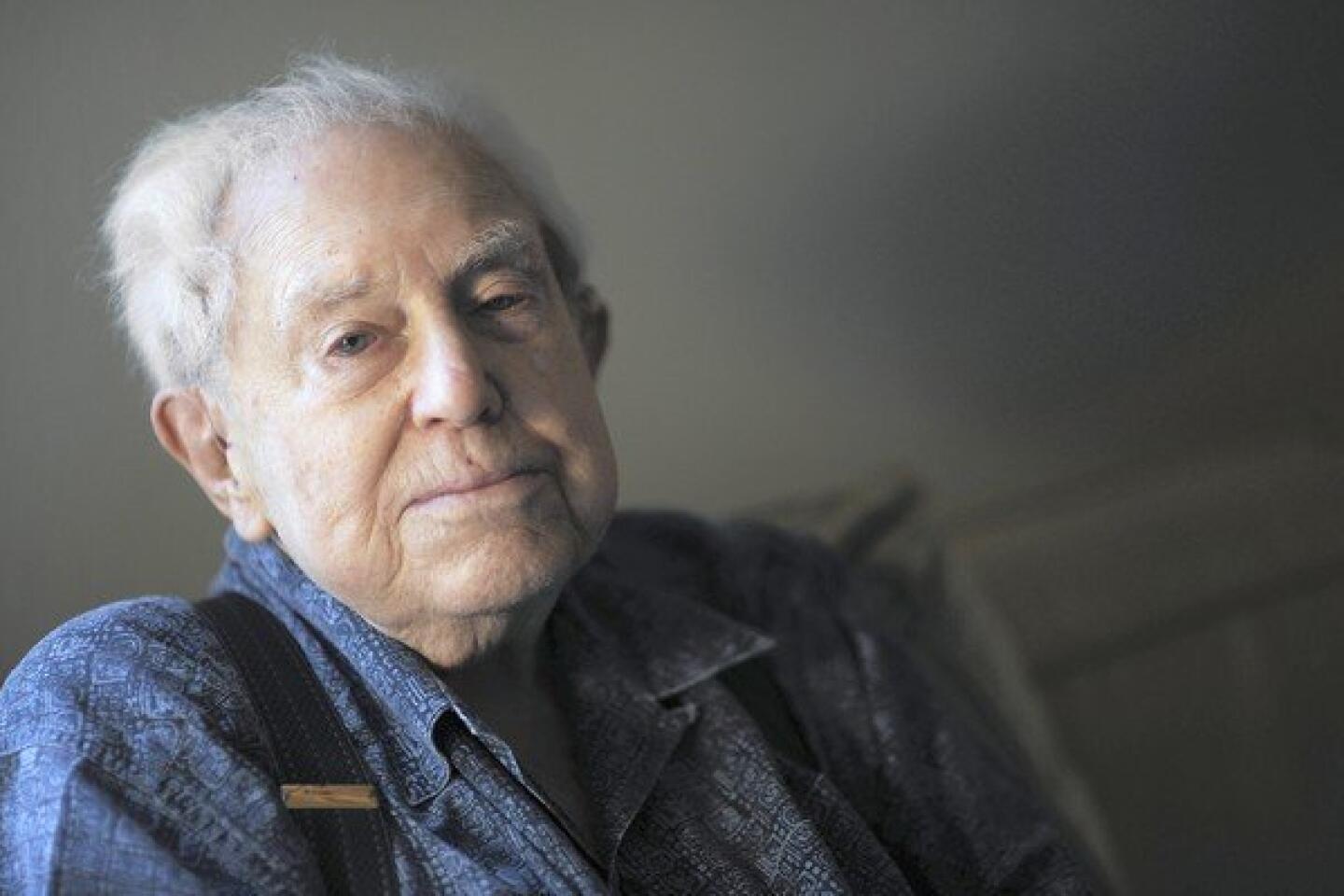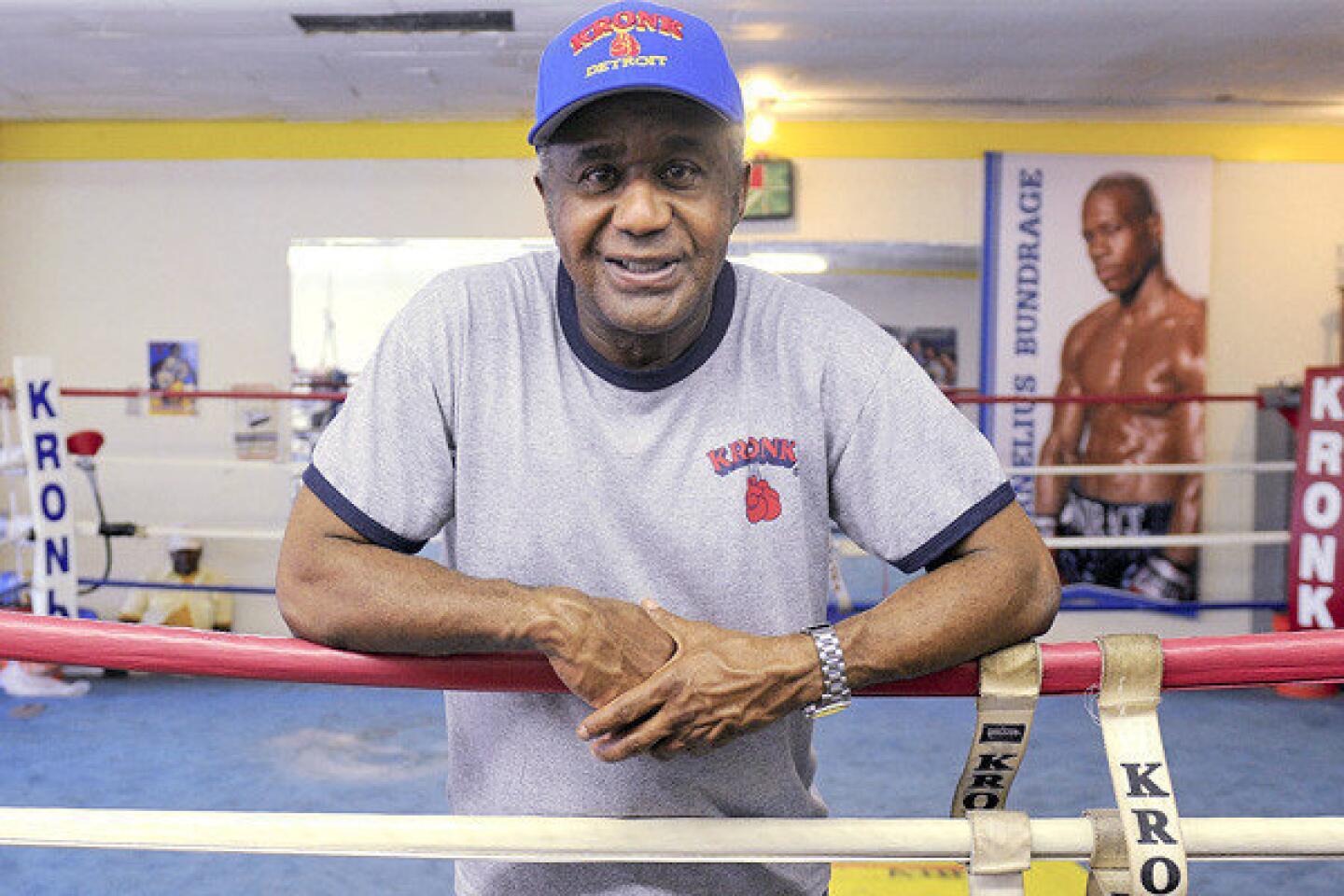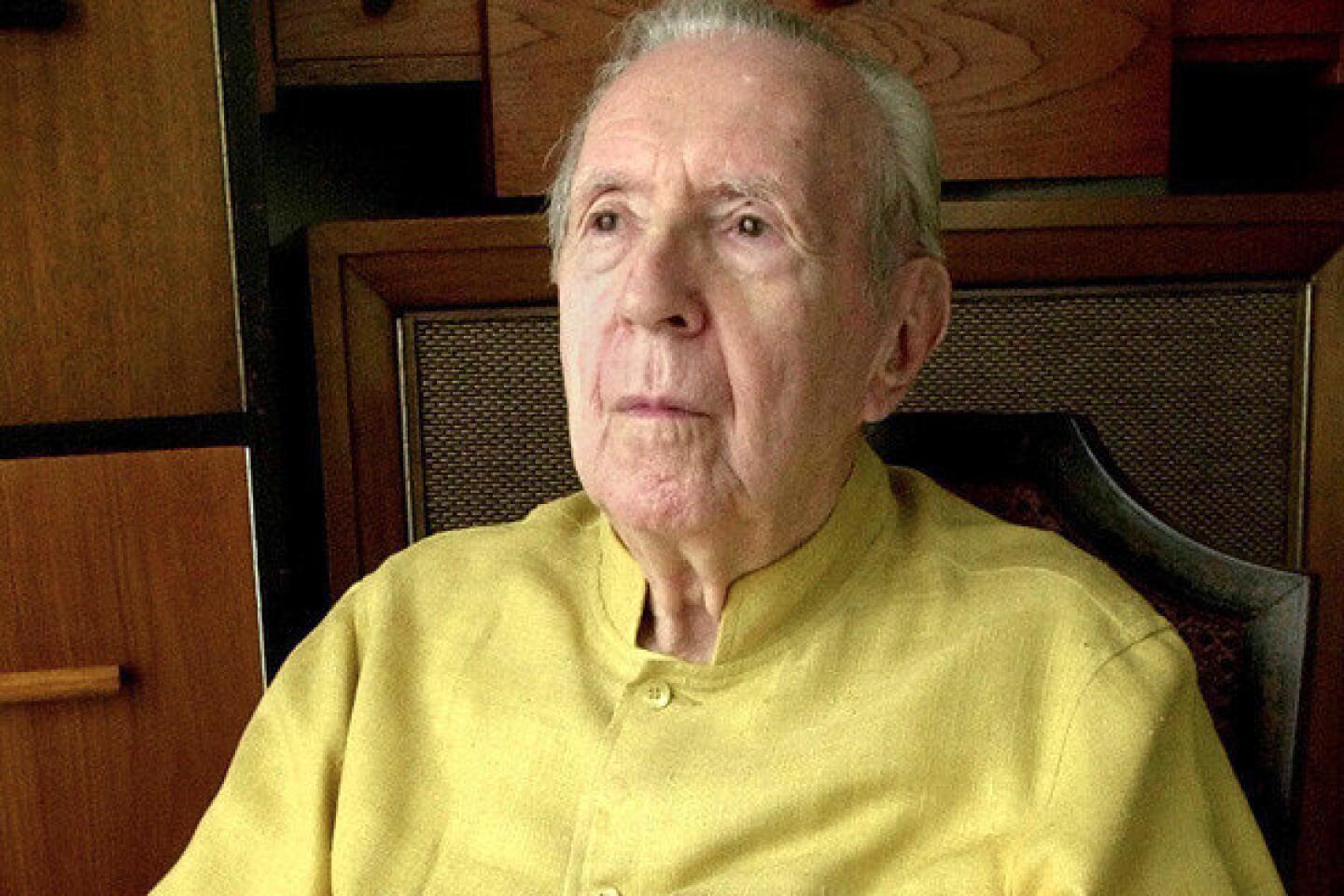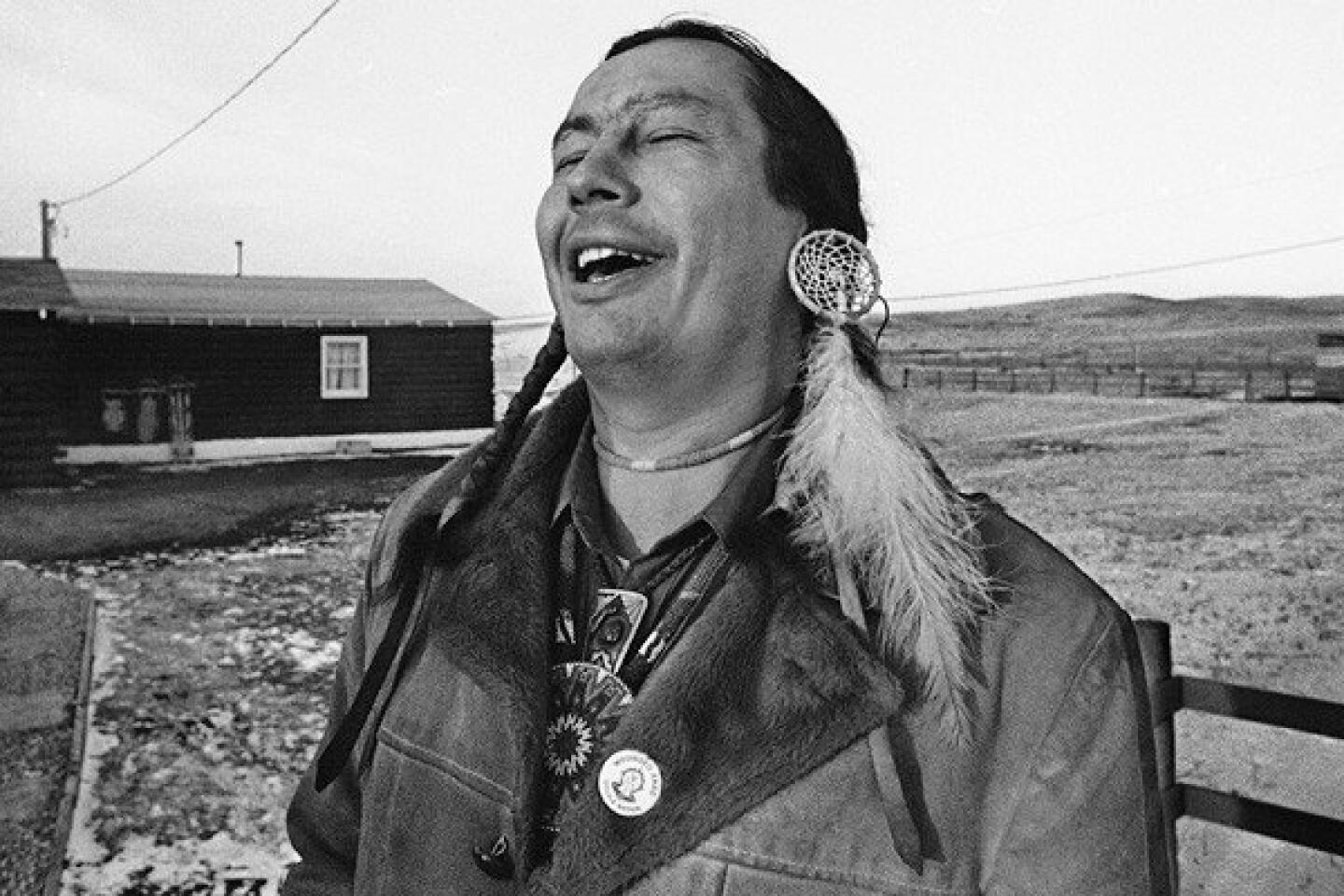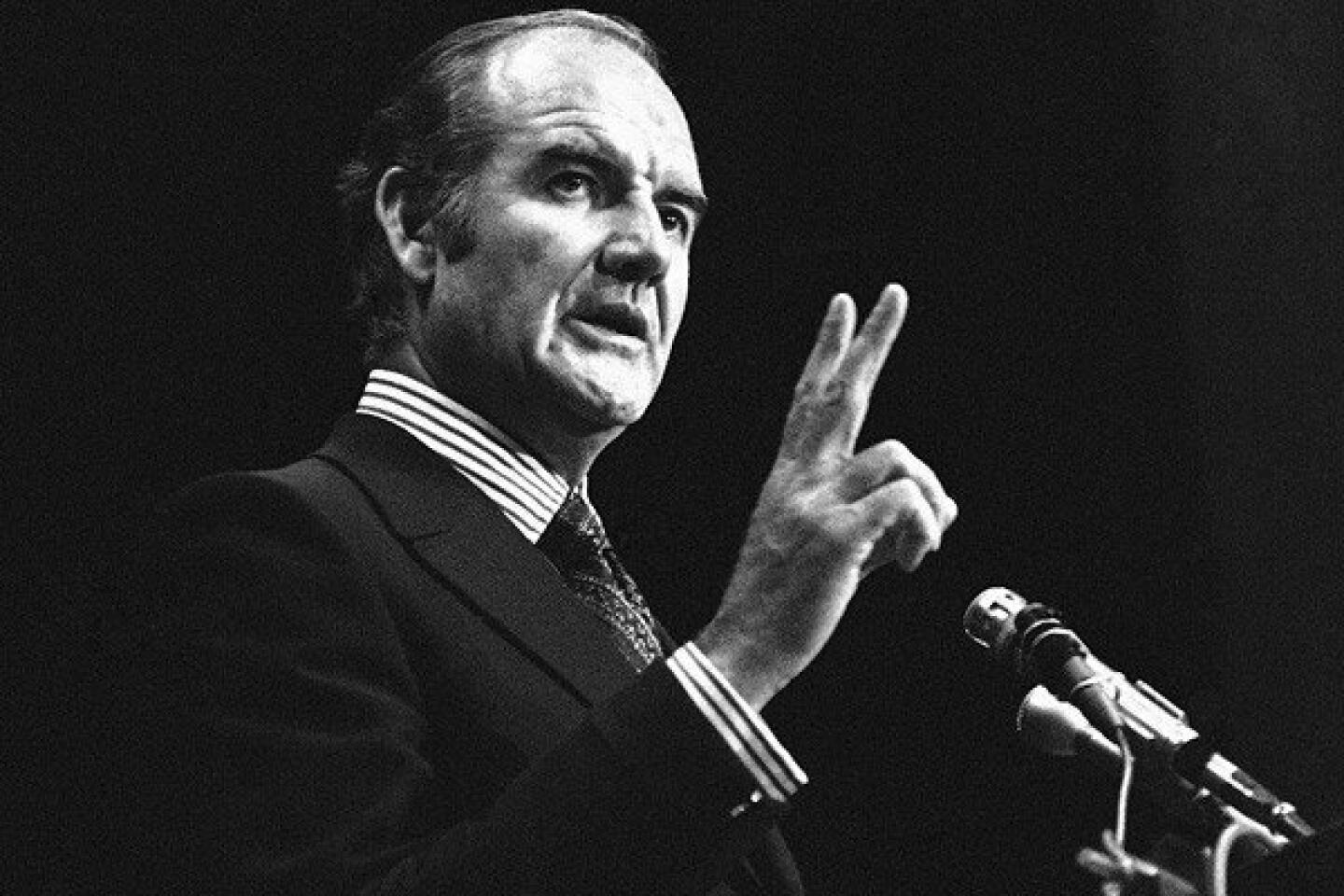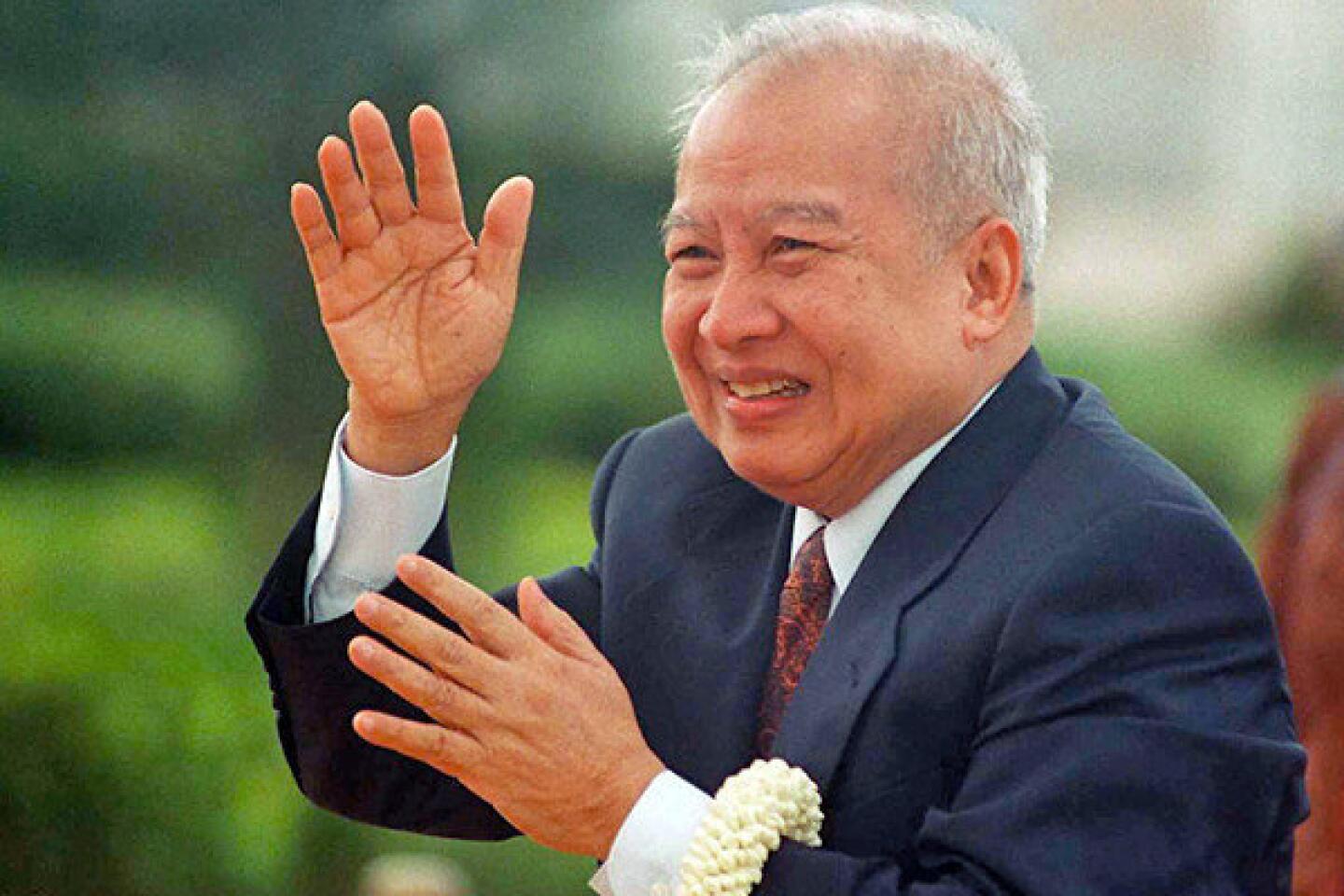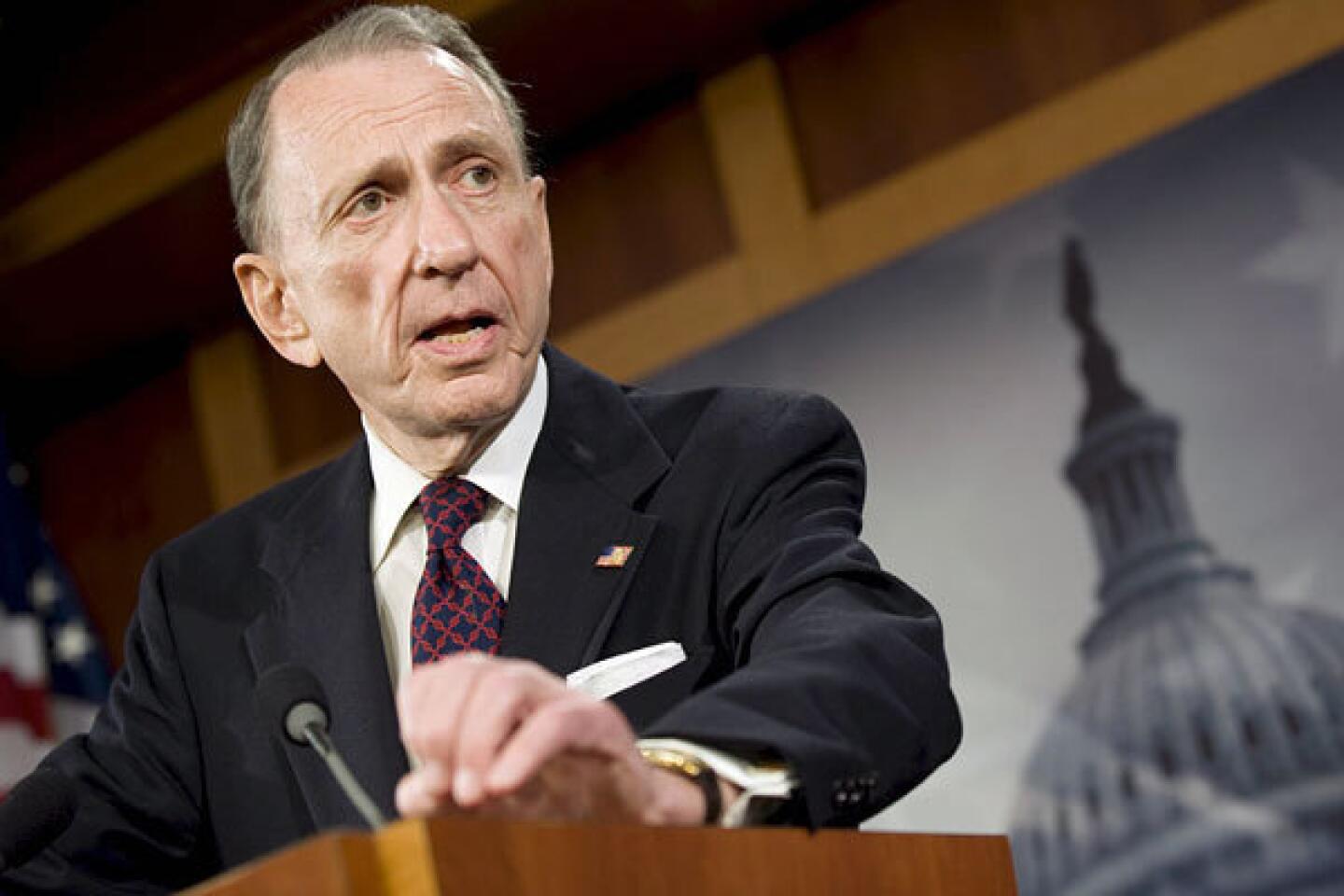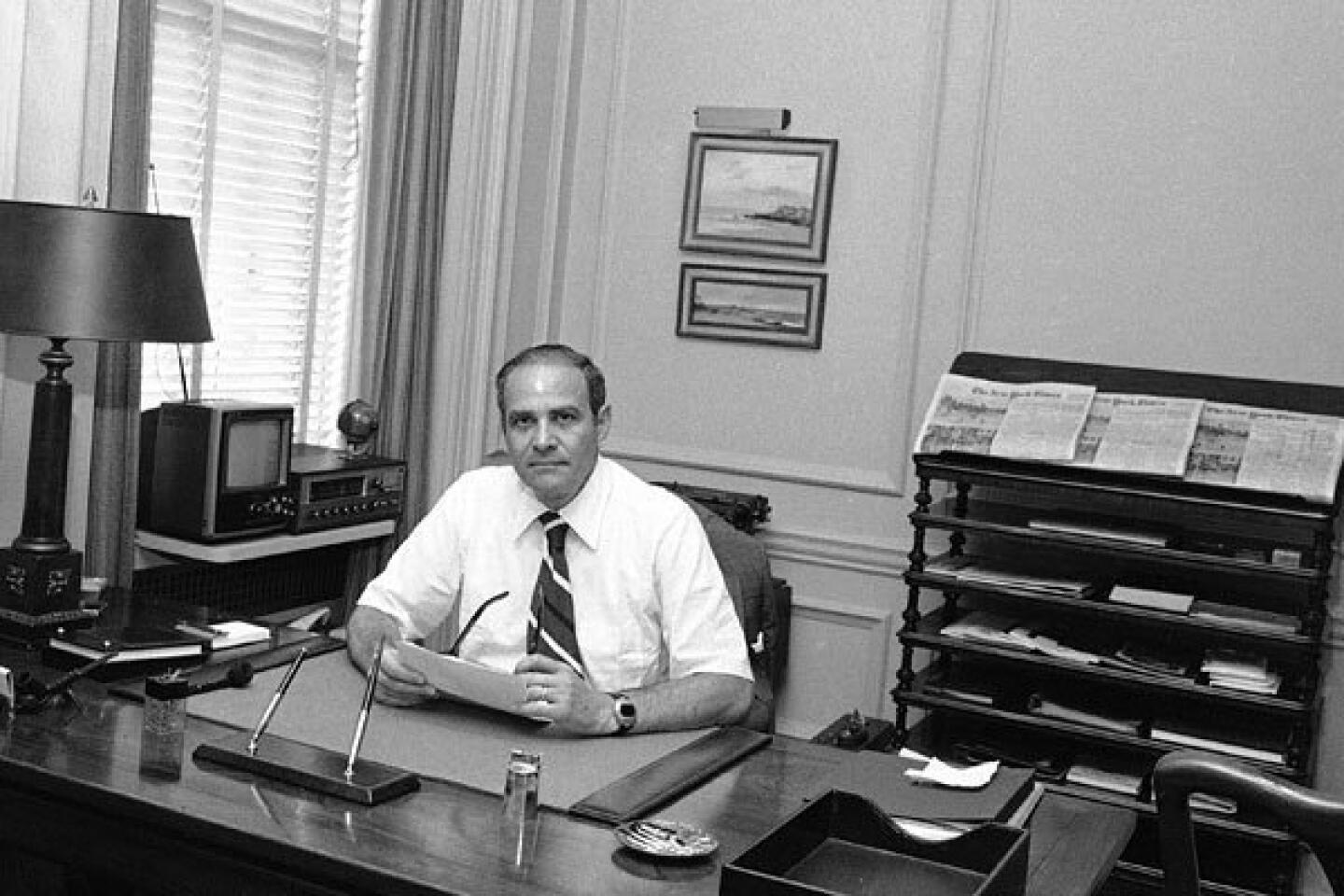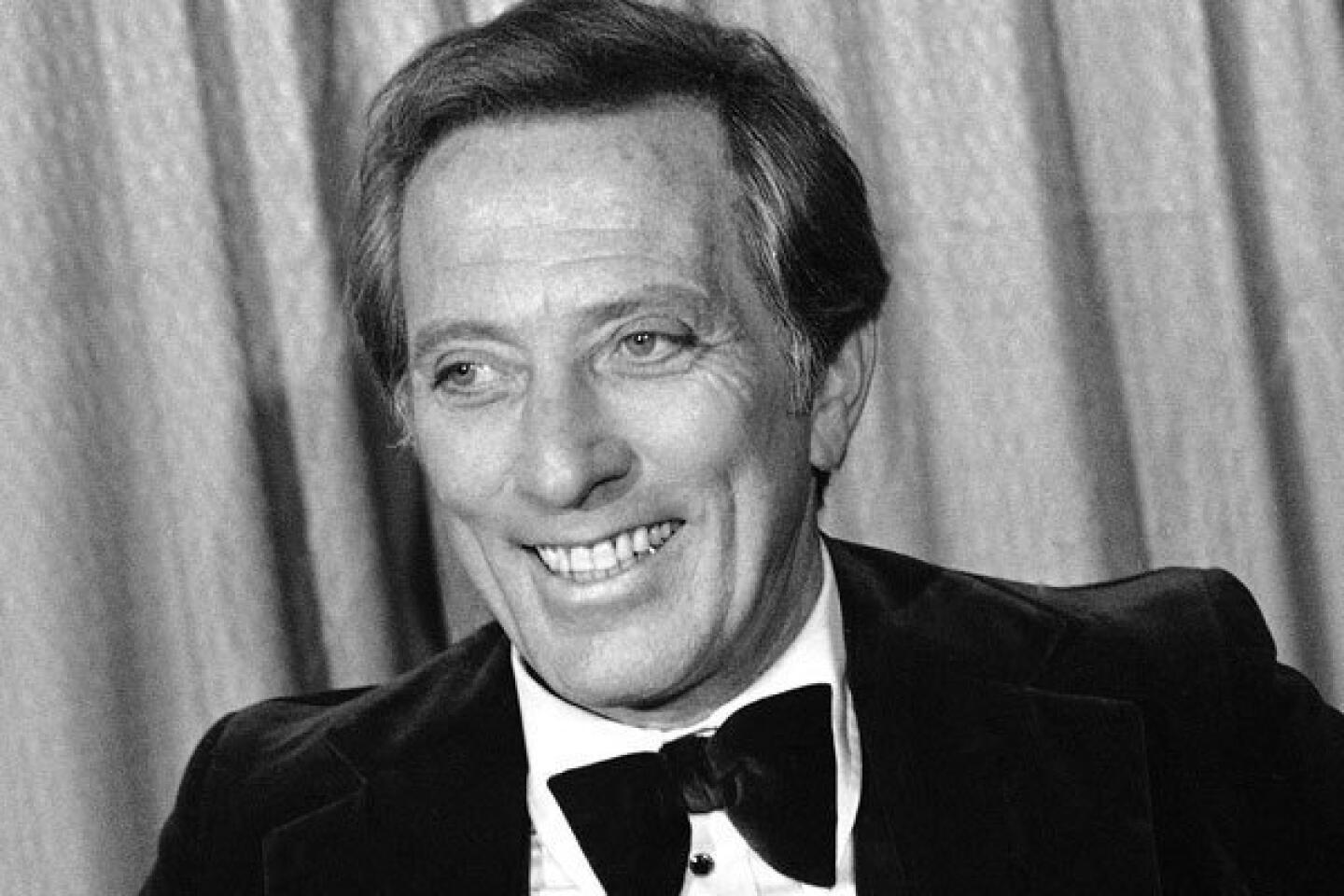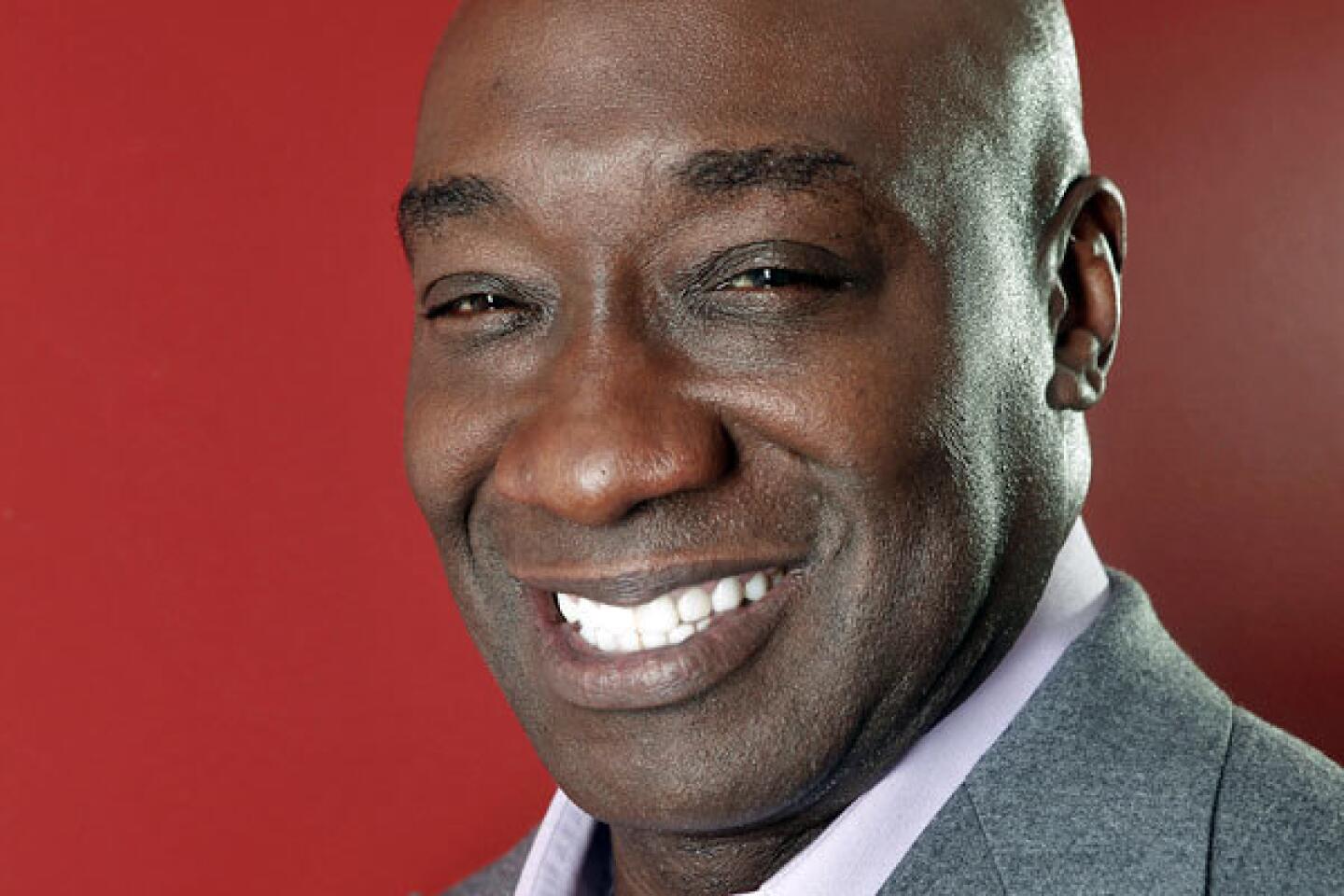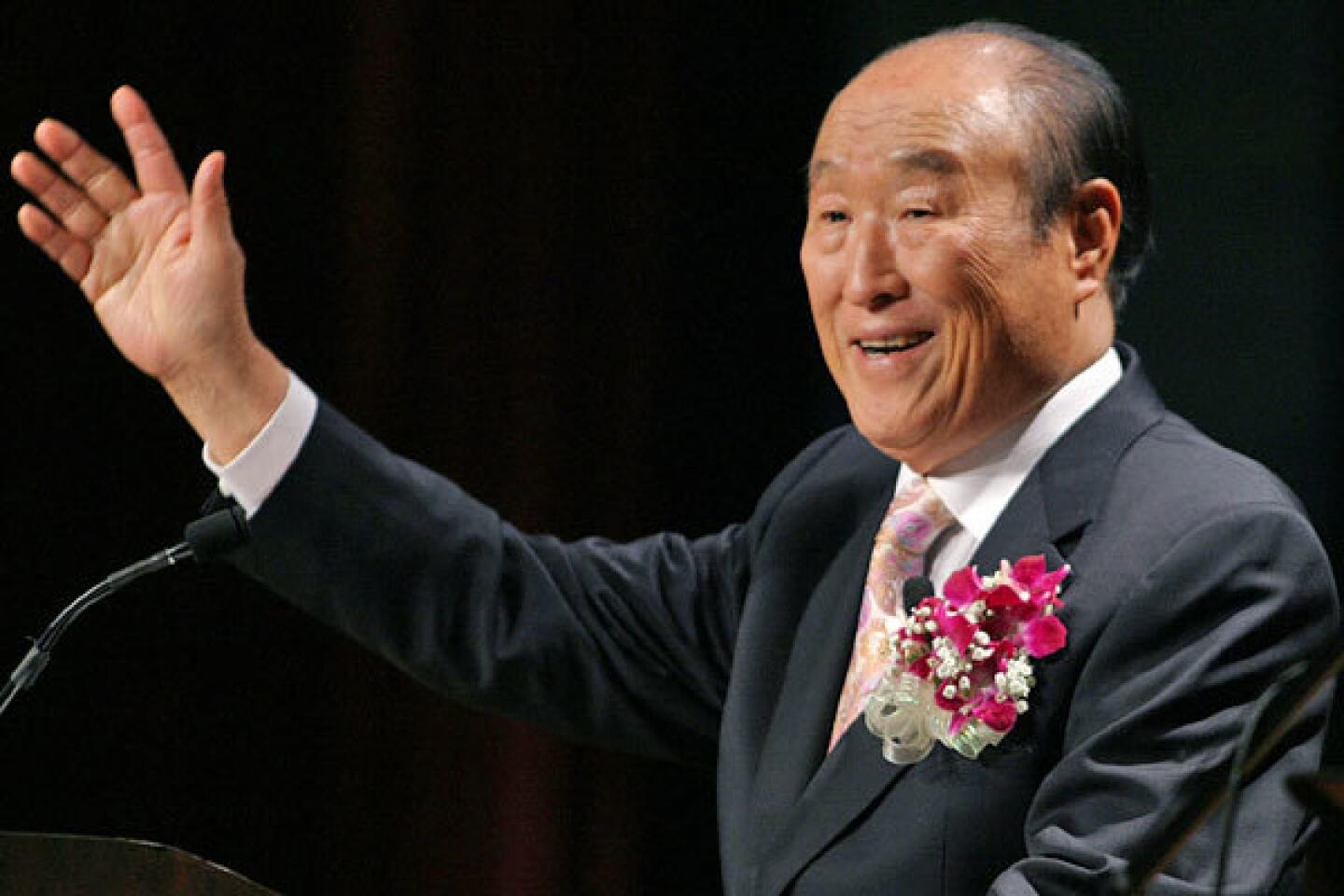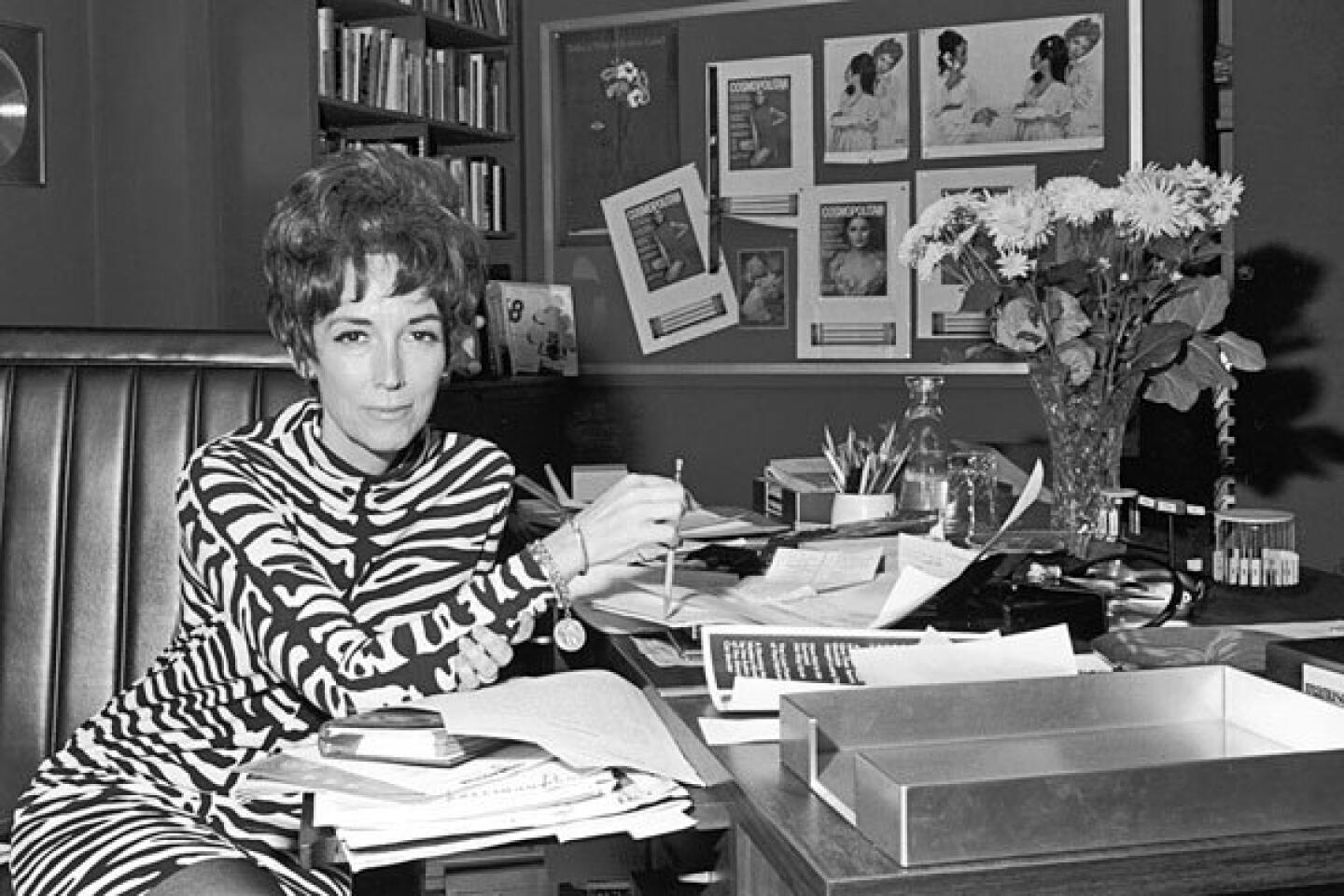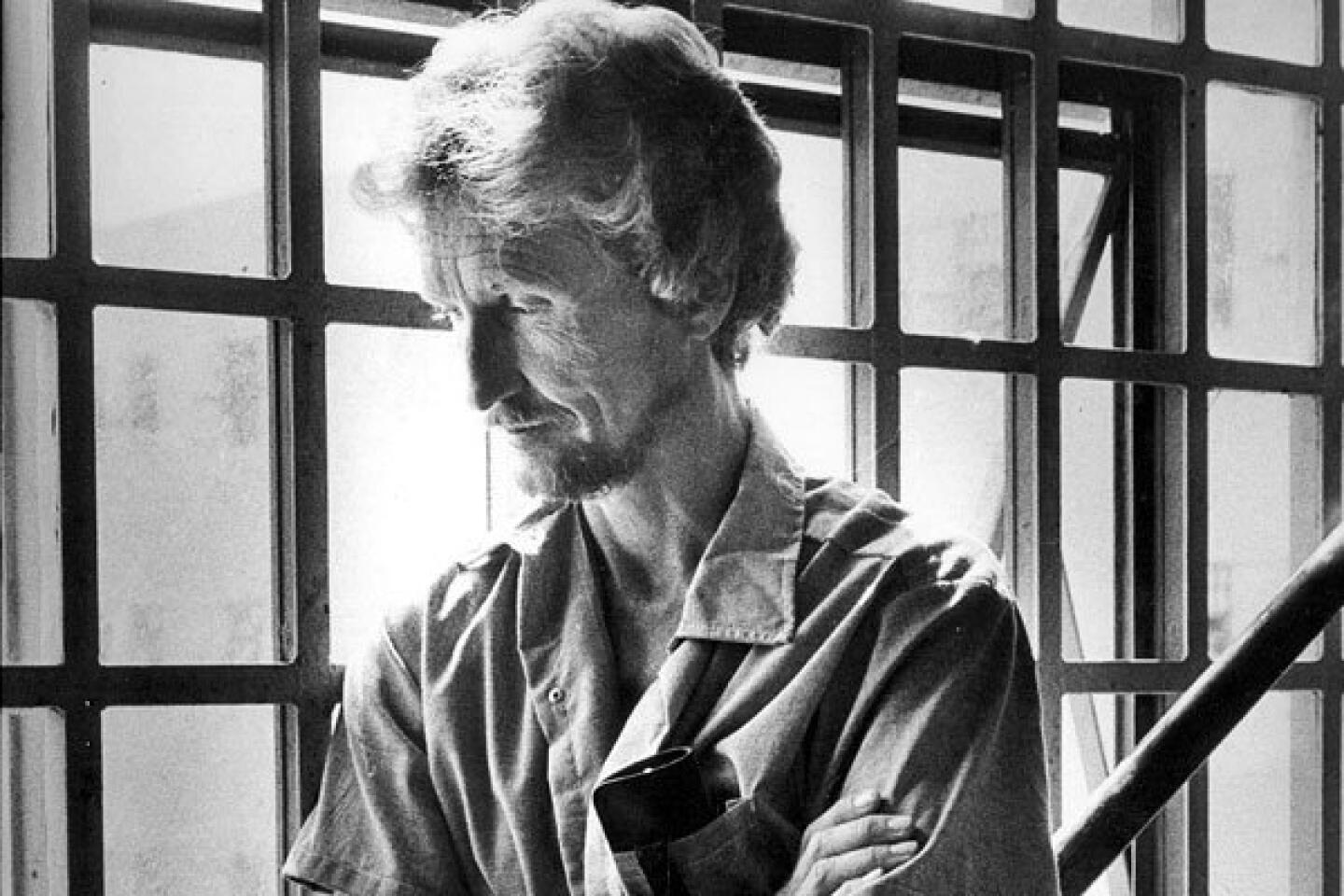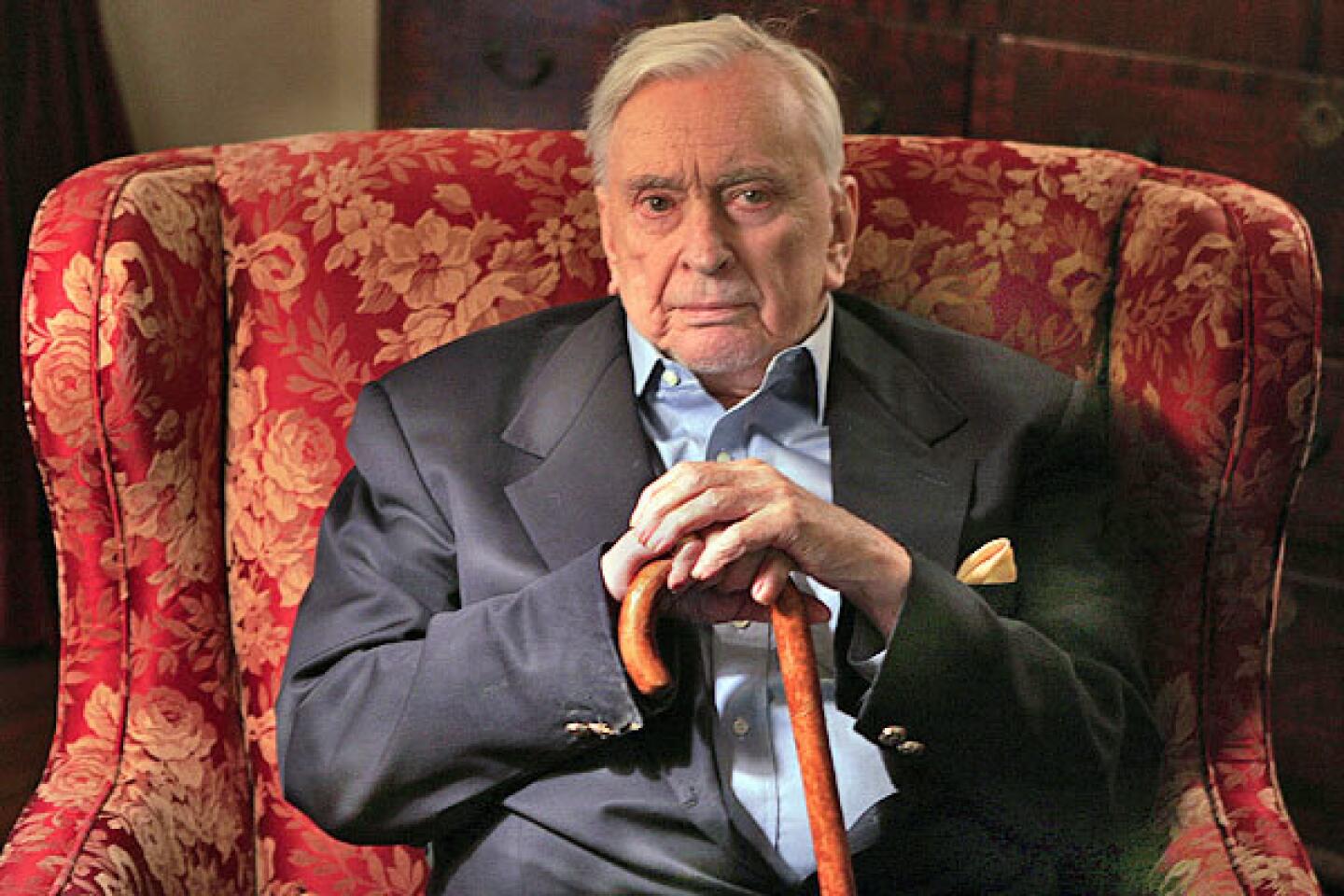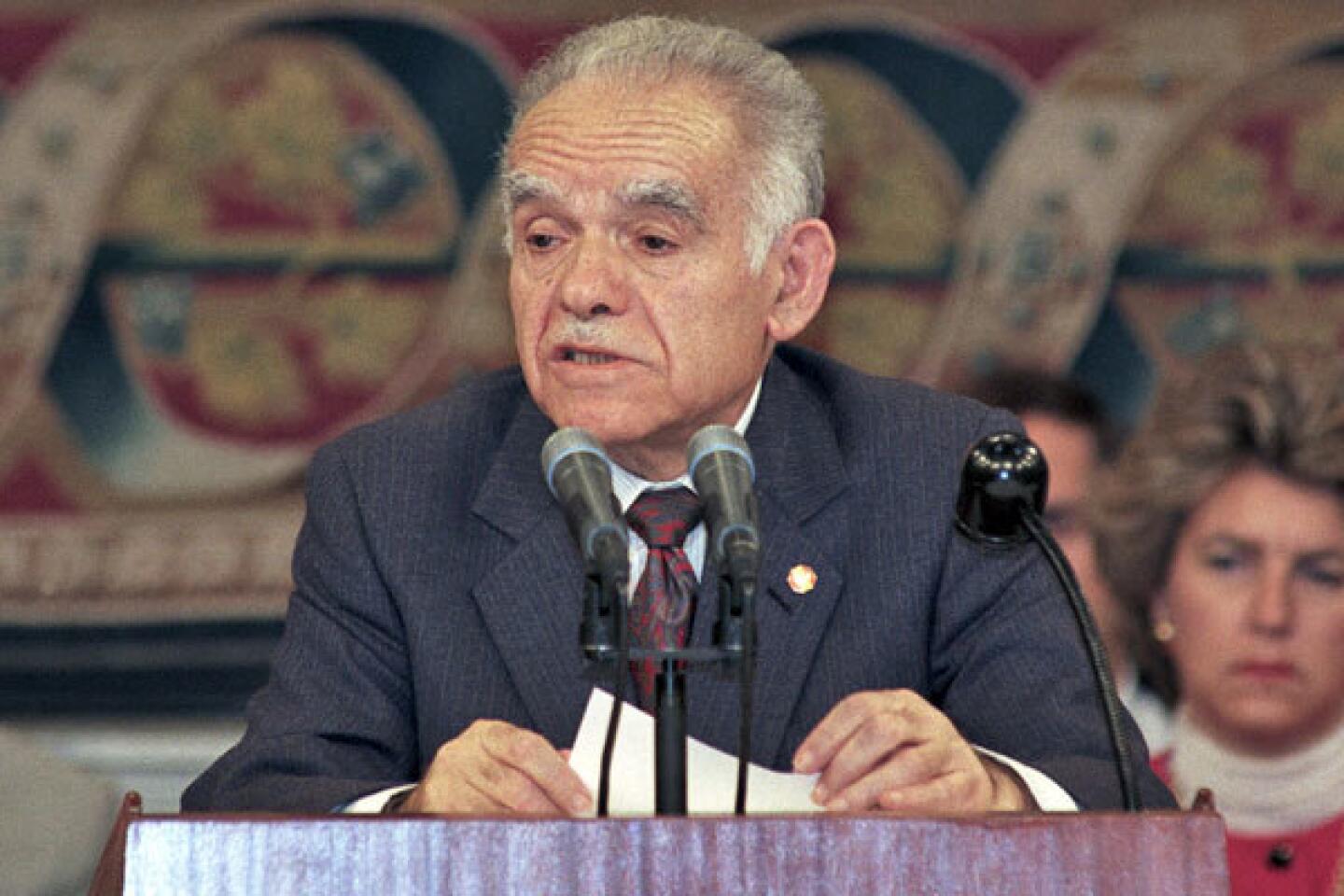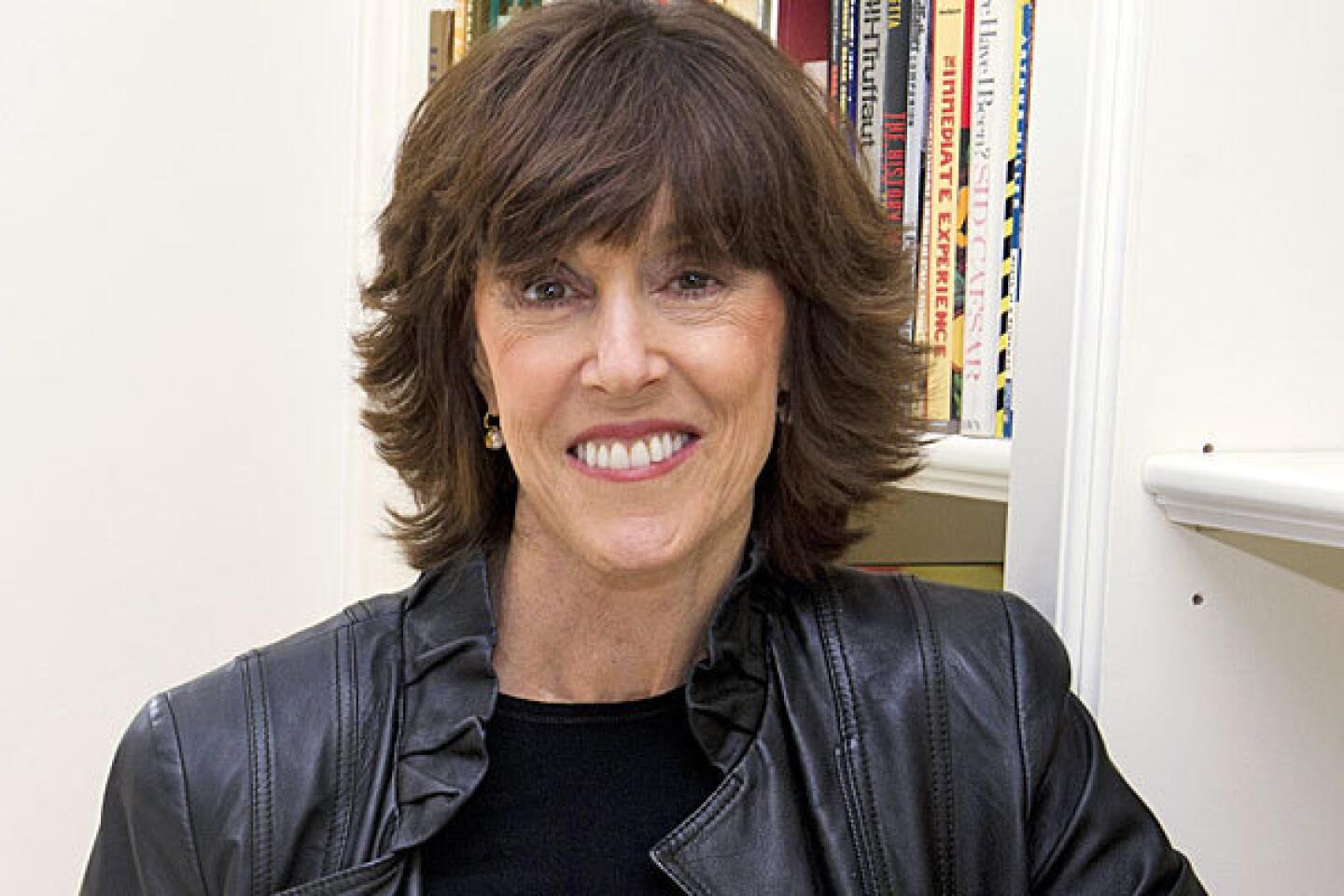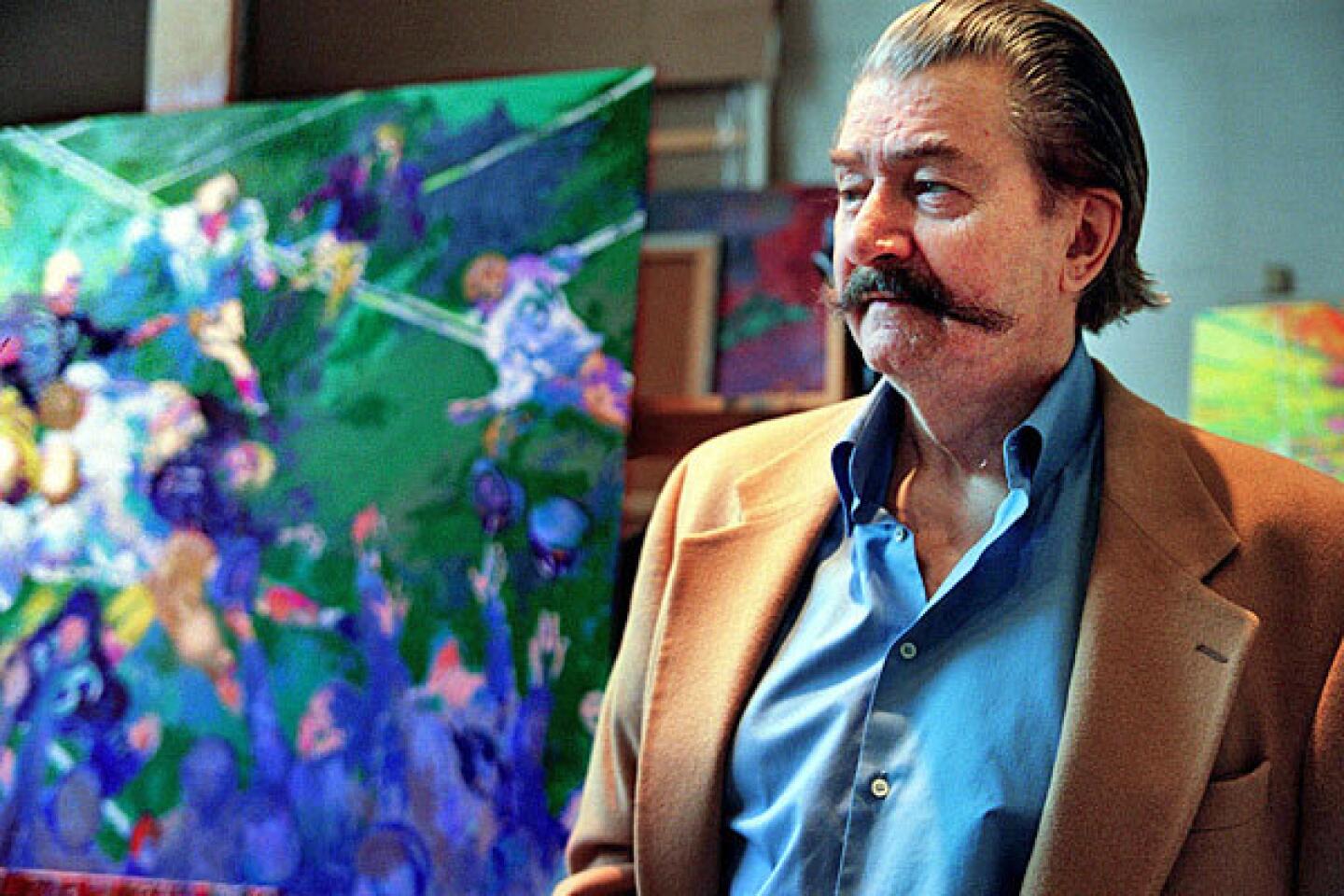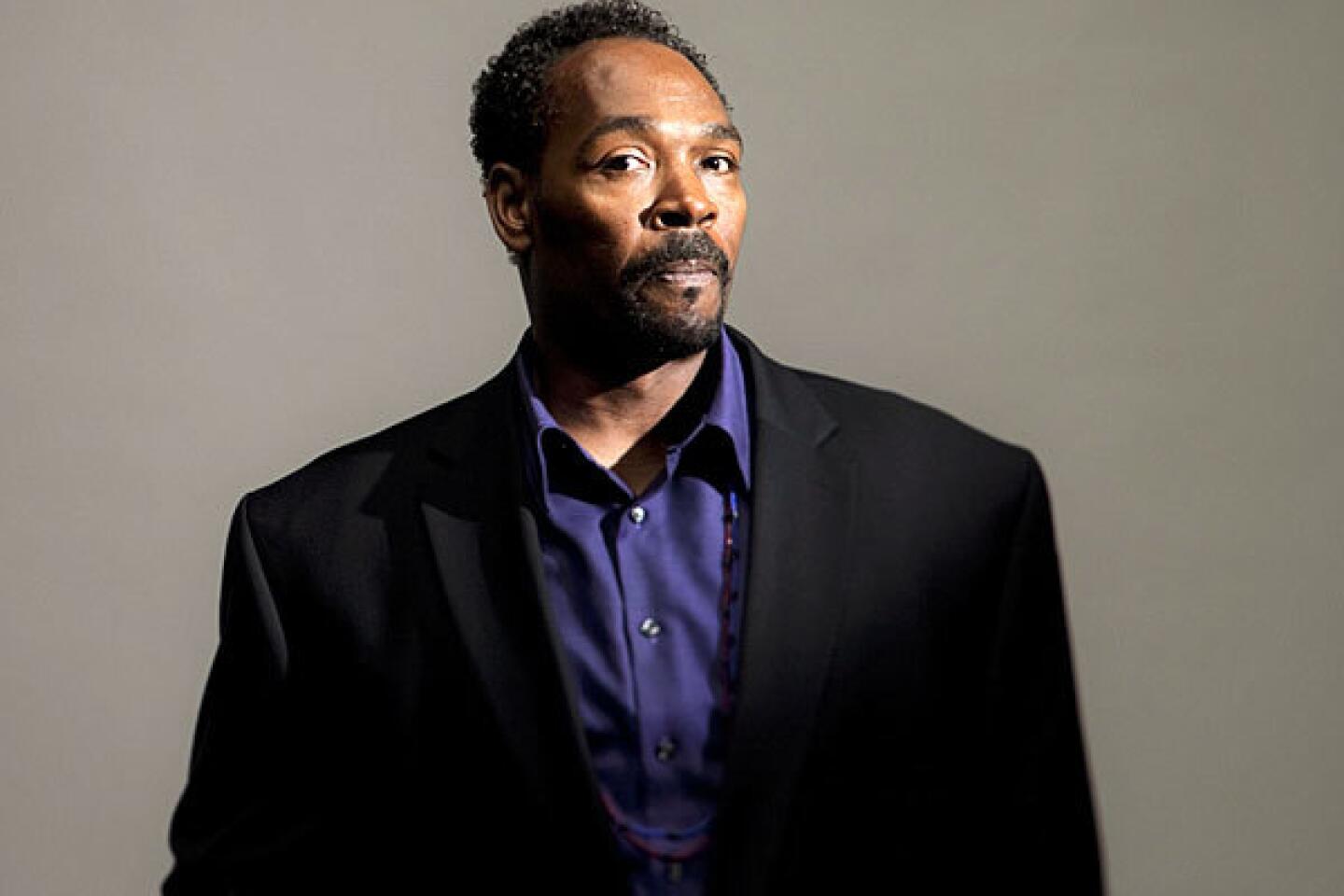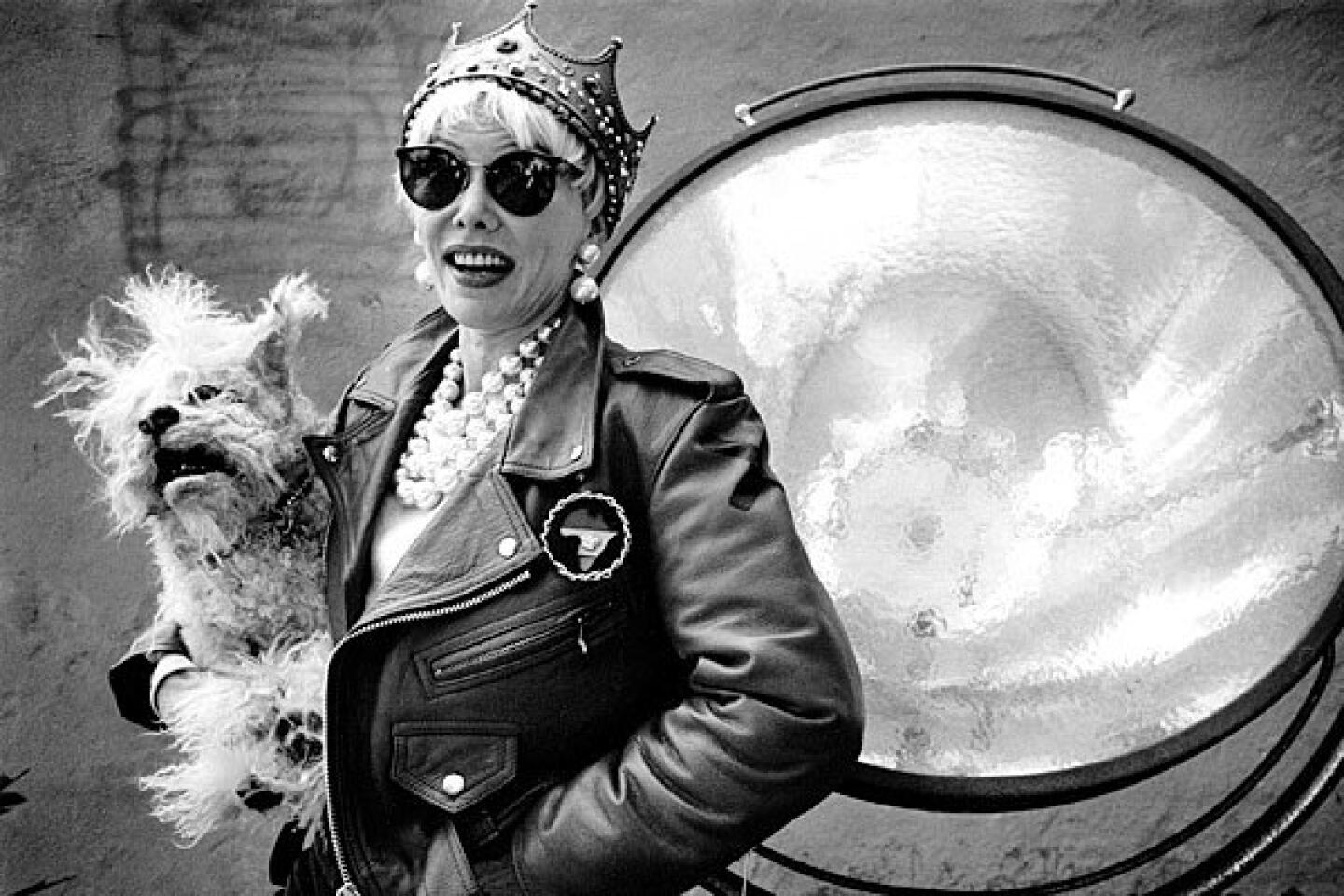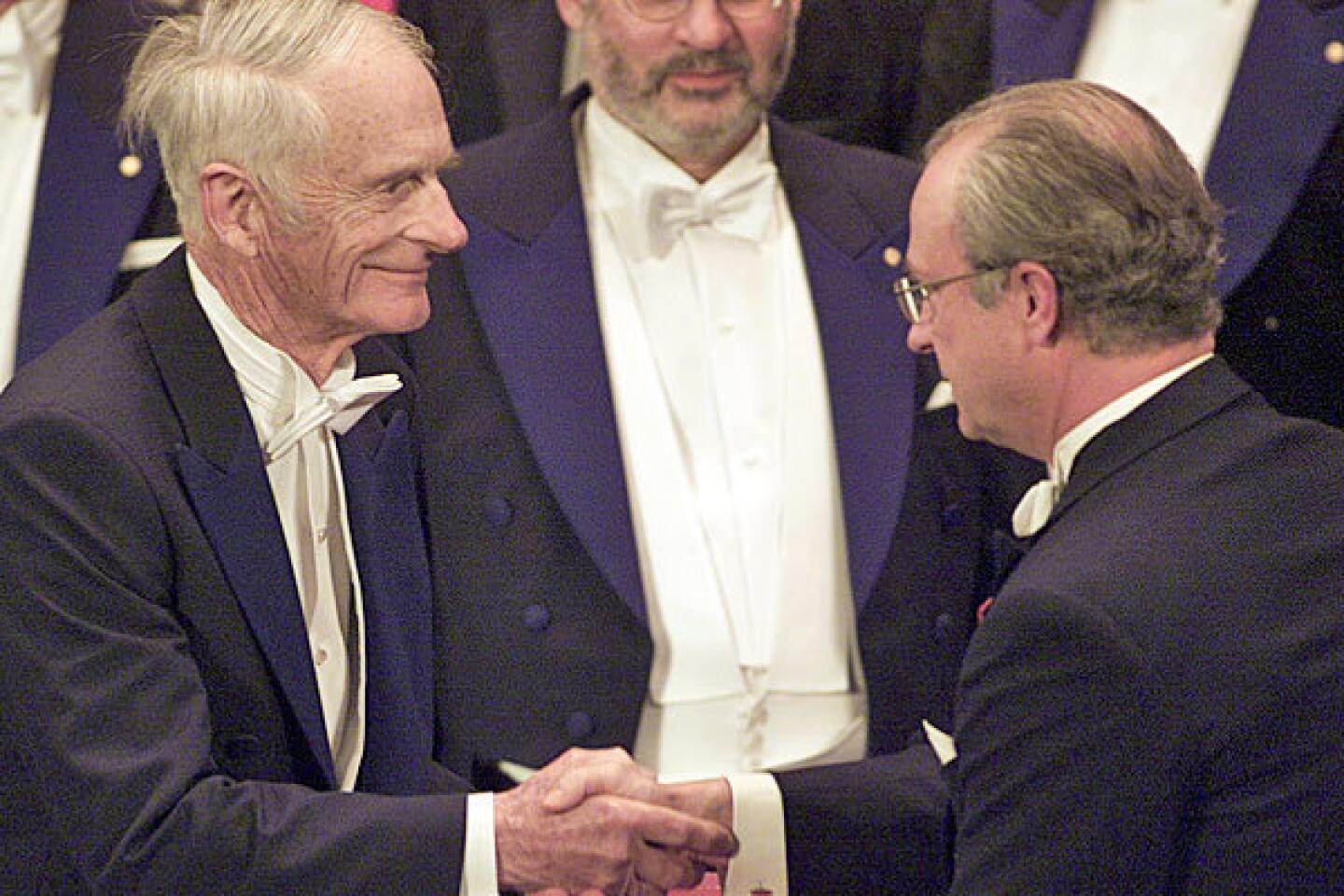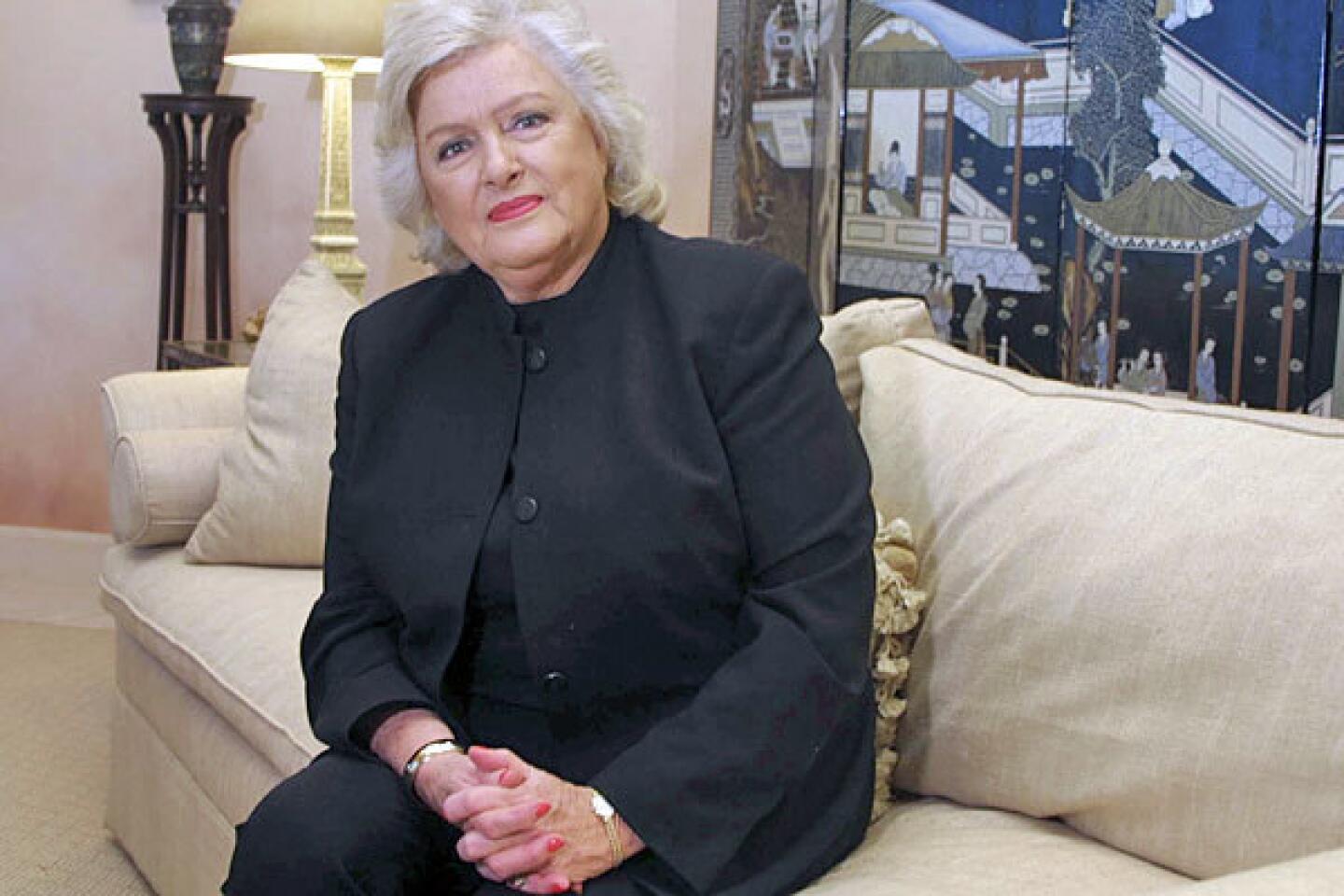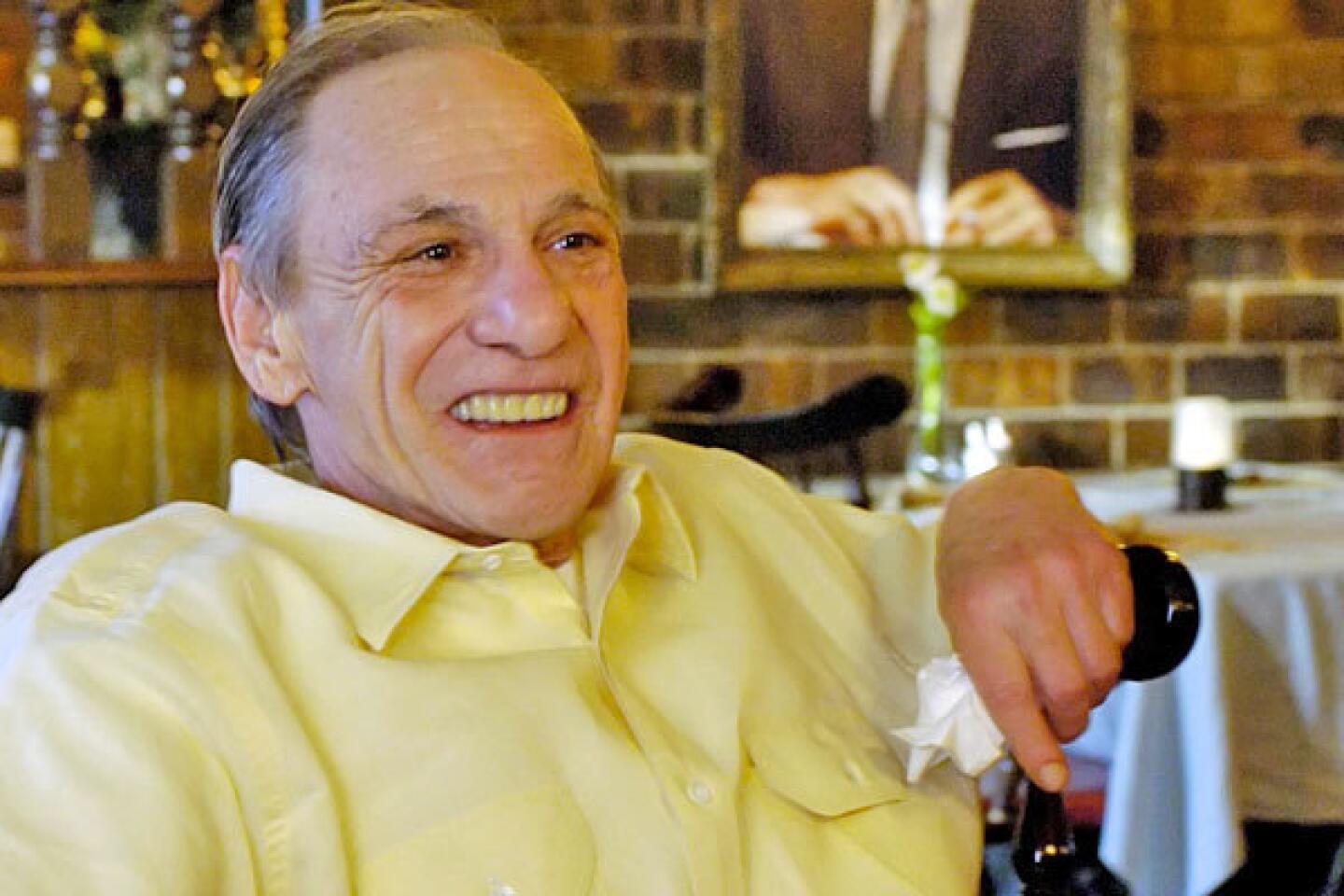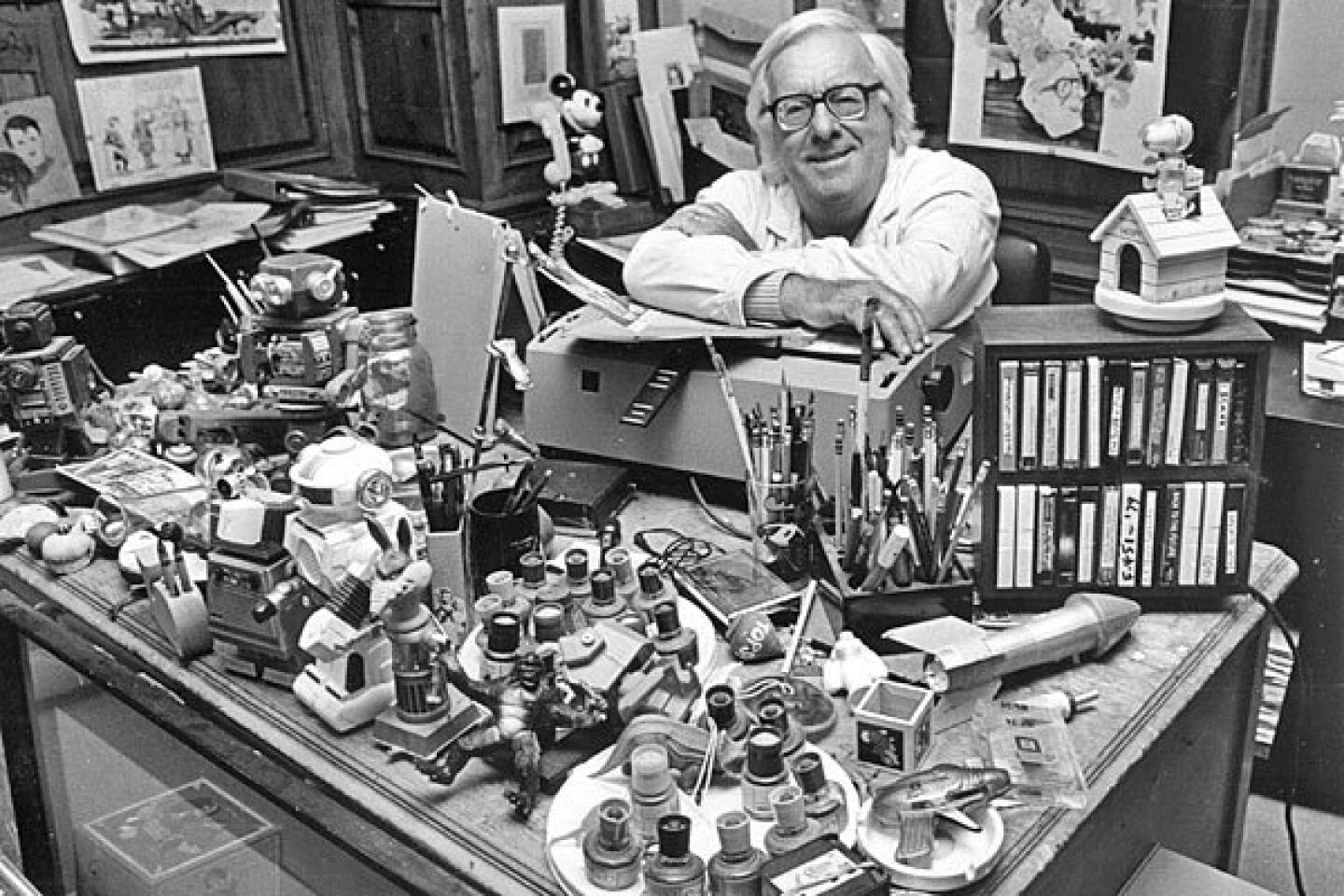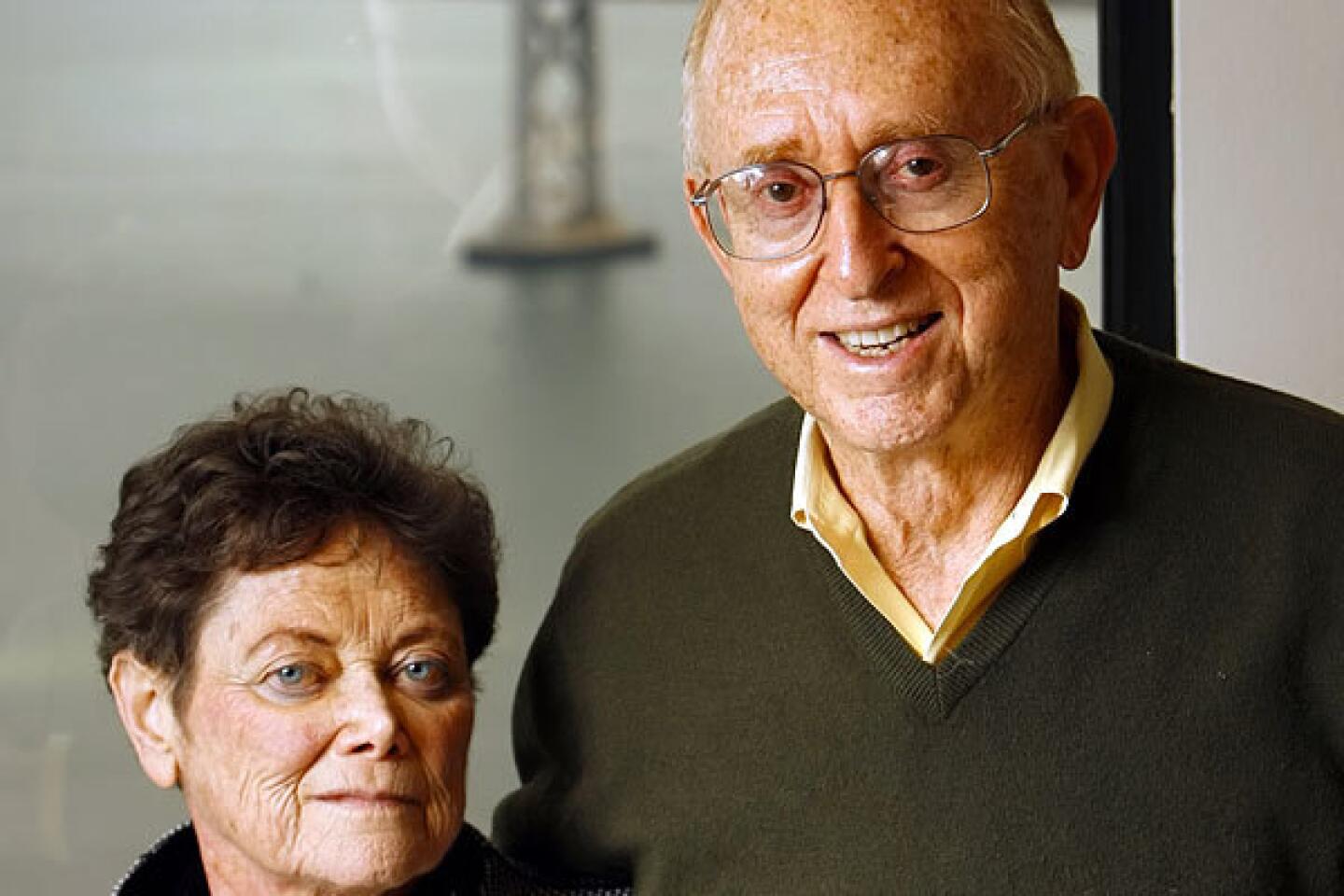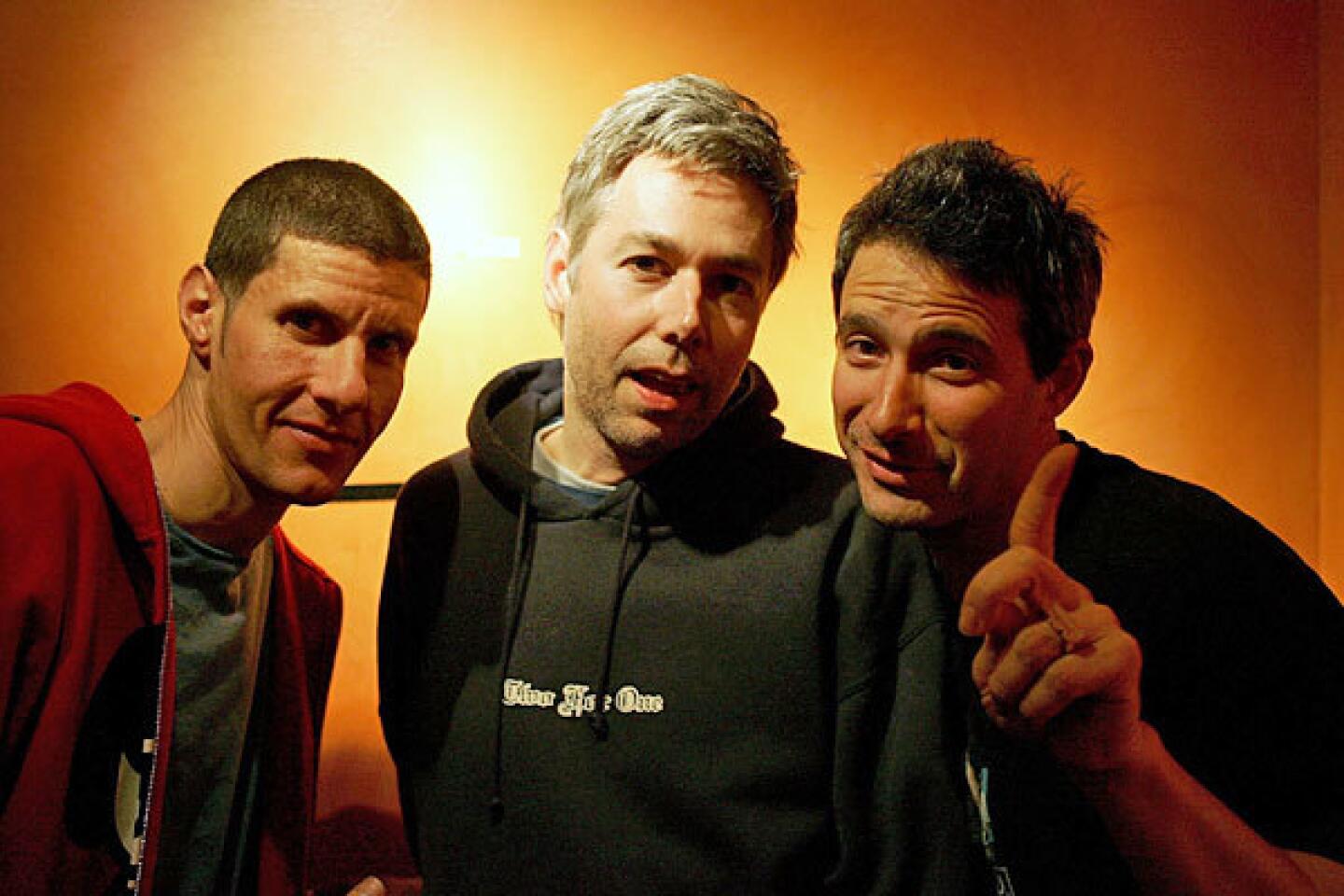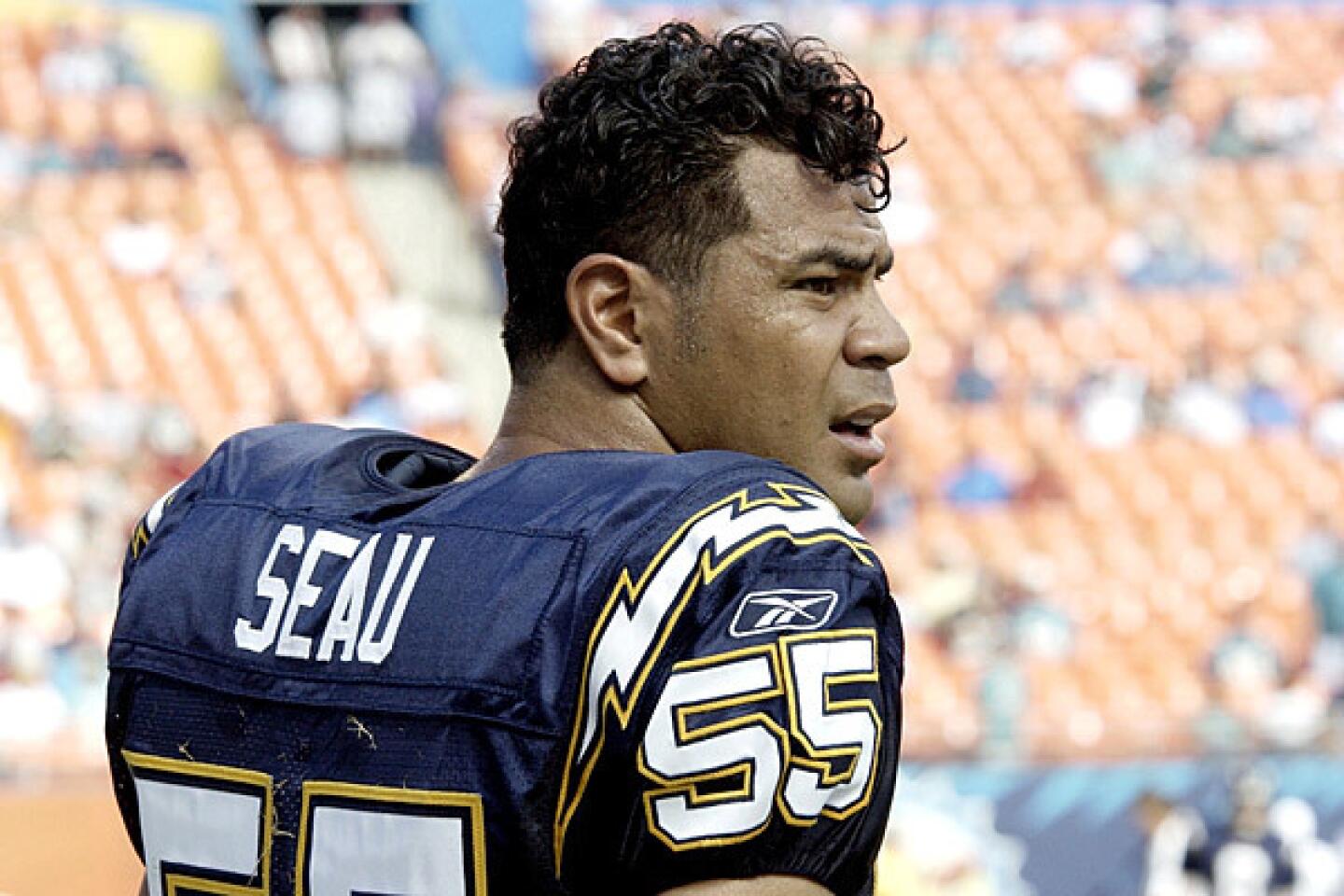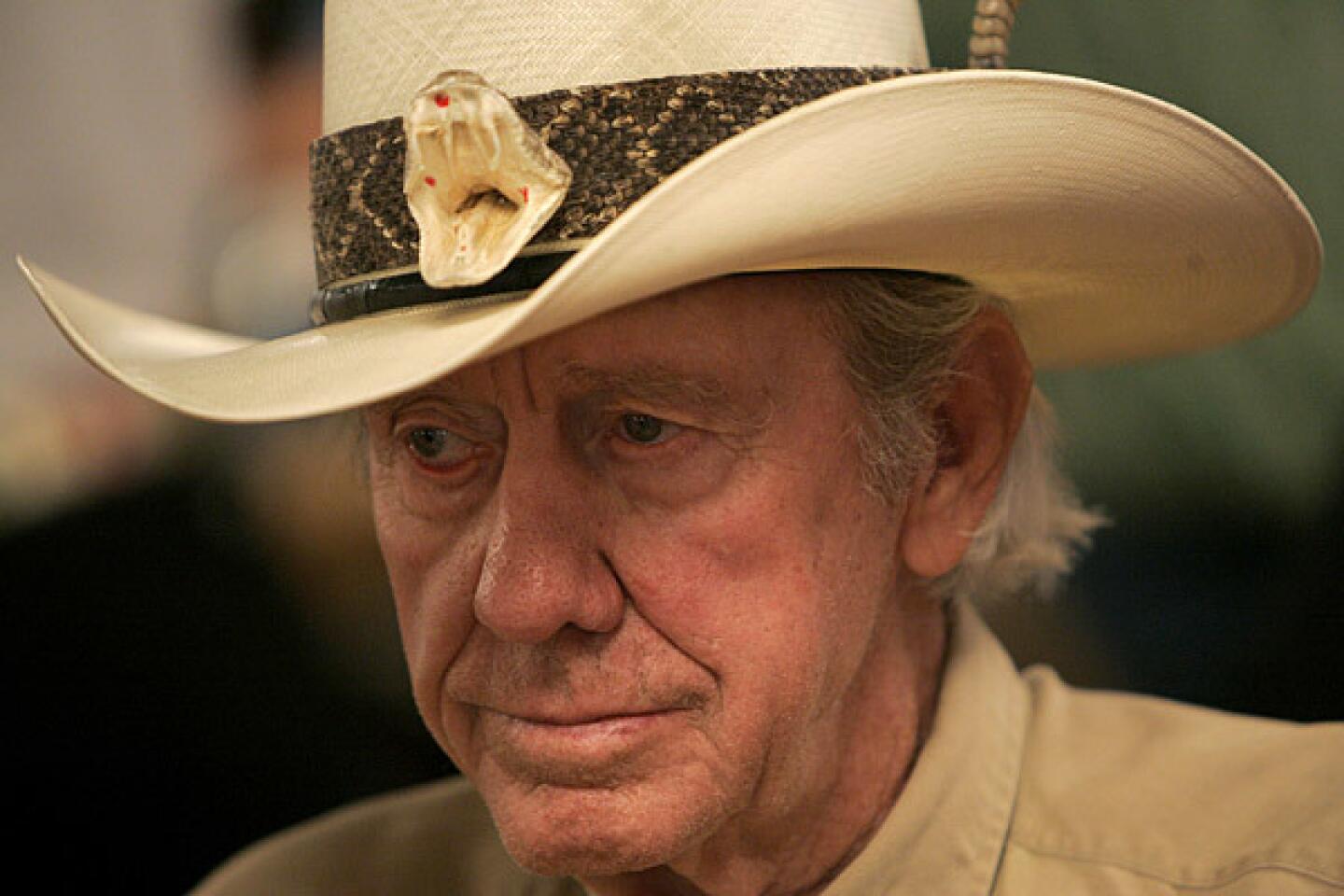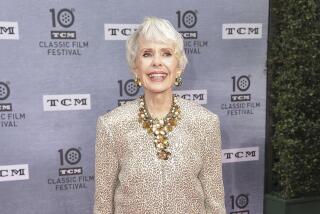PASSINGS: Peter Breck, Philip Bruns, Jim Lloyd, Harry Keough, Antoni Tapies, Florence Green, Morgan Jones, Bill Hinzman
Peter Breck
Actor on ‘The Big Valley’
Peter Breck, 82, an actor who played a son of ranch owner Barbara Stanwyck on the 1960s TV western “The Big Valley,” died Monday in Vancouver after a long illness, his wife, Diane, announced on the website The Big Valley Writing Desk.
Born March 13, 1929, in Rochester, N.Y., and raised in Haverhill, Mass., Breck began acting on the New York stage before landing parts in movies and television.
He was best known for his role as hot-tempered rancher Nick Barkley on “The Big Valley,” which aired from 1965 to 1969 on ABC. He was also a regular on the TV westerns “Maverick” and “Black Saddle.”
Breck and his wife moved to Canada a number of years ago, and he operated an acting school.
Philip Bruns
Character actor on TV, in films
Philip Bruns, 80, a character actor who played the father on the 1970s comedy series “Mary Hartman, Mary Hartman,” died Wednesday at Cedars-Sinai Medical Center in Los Angeles of natural causes, his family announced.
Bruns appeared on two seasons of “Mary Hartman, Mary Hartman,” playing Mary’s father on the soap-opera parody. He also was a regular on Jackie Gleason’s comedy-variety show in the mid-1960s.
Born in 1931 in Pipestone, Minn., Bruns attended Yale University’s drama school, then began his career in New York on the stage and as a prolific actor in TV commercials.
He later appeared in more than 40 feature films, including “Flashdance,” “The Stunt Man” and “My Favorite Year.”
Jim Lloyd
Former West Covina congressman
Jim Lloyd, 89, a former naval aviator turned moderate Democratic politician from West Covina who focused on military and defense issues while serving in Congress from 1975 until 1981, died Feb. 2 at a hospital in Pensacola, Fla., after a solo car crash.
Lloyd, who had been visiting a grandson, apparently suffered a stroke while driving on a Pensacola highway Jan. 22, said his son, Brian.
Elected to Congress in 1974 during a wave of Democratic success after the Watergate scandal and President Nixon’s resignation, Lloyd served three terms in the House representing the 35th District, which mainly covered the San Gabriel and Pomona valleys. In 1980 he lost to current U.S. Rep. David Dreier, when Ronald Reagan swept Republican candidates into Washington as he captured the White House.
A former Navy fighter pilot, Lloyd had a seat on the House Armed Services Committee. He made firsthand recommendations about defense spending proposals after taking aircraft on test flights.
James Fredrick Lloyd was born Sept. 27, 1922, in Helena, Mont. He had a bachelor’s degree from Stanford University and a master’s from USC. He served in the Navy from 1942 to 1963, as a pilot in World War II and the Korean War and as public information officer at Guantanamo Bay in Cuba.
After serving in the military, he opened a San Gabriel Valley public relations firm. He was a West Covina city councilman before running for Congress. He later became a political consultant in Washington.
Harry Keough
American soccer legend
Harry Keough, 84, who played for the U.S. soccer team that famously upset England at the 1950 World Cup, died Tuesday at his home in St. Louis, according to the U.S. Soccer Federation.
A defender who had one goal in 19 appearances for the U.S. from 1949-57, Keough coached Saint Louis University to five NCAA soccer titles. He was inducted into the National Soccer Hall of Fame in 1976.
Keough started all three games for the Americans at the 1950 World Cup in Brazil and was captain when the U.S. played Spain in its opener. The 1-0 win over England in the Americans’ second game is regarded by many as the greatest upset in soccer history.
On June 29, 1950, the U.S. faced a lineup that included Alf Ramsey, Tom Finney and Stanley Mortensen. Surprisingly, the Americans went ahead in the 37th minute when Walter Bahr collected a throw-in from Ed McIlvenny and took a shot from about 25 yards out that Joe Gaetjens deflected past goalkeeper Bert Williams with a diving header.
Keough remembered the England players starting to panic in the final minutes.
“They could see it slipping from them,” Keough said a few years ago. “They didn’t ever dream we could beat them. Neither did we.”
The U.S. held on for the victory, which was front-page news in England but was buried deep in most U.S. sports sections. In their next game, the Americans were eliminated with a loss to Chile.
A St. Louis native and youth soccer player, Keough served in the Navy during World War II. He was among five from the St. Louis area in the starting lineup against England, a group profiled in the 2005 movie “The Game of their Lives.”
Antoni Tapies
Spanish art figure
Antoni Tapies, 88, a Catalan painter and sculptor considered one of the world’s top contemporary art figures, died Monday in Barcelona, the government announced. He had been in poor health since 2007.
Born in Barcelona in 1923, Tapies was one of Spain’s main exponents of abstract and avant-garde art in the second half of the 20th century, and his work has been displayed in major museums across the world.
Tapies -- whose many awards include the 2003 Velazquez Prize, Spain’s top art award -- was known for sprawling, abstract works that sometimes featured discarded everyday materials and graffiti-like scrawls. Other trademarks were crosses, and the letter X and number 4, symbolizing the four elements of nature and the four cardinal points.
His most notable works included “Gray Relief on Black” (1959) and “White and Orange” (1967), “Pants and Woven Wire” (1973) and his famous sculpture “Sock.”
In 1948, Tapies helped co-found the first postwar movement in Spain known as Dau al Set, which was connected to the Surrealist and Dadaist movements.
“Tapies is without a doubt Spanish art’s most prominent figure of the second half of the 20th century,” Reina Sofia museum Director Manuel Borja-Villel wrote in El Pais newspaper. “Inheritor of the genius of the first vanguard movement, which had as its chief representatives Picasso, Miro and Dali, he was a constant presence in our country over the past 60 years.”
Florence Green
Last known World War I veteran
Florence Green, 110, the world’s last known veteran of World War I, died Feb. 4, two weeks before her 111th birthday, at a care home in King’s Lynn, England.
Born in London on Feb. 19, 1901, she joined the Women’s Royal Air Force in September 1918 at age 17. She went to work as a waitress in the officers’ mess at RAF Marham in eastern England, and was serving there when the war ended in November 1918.
The war’s last known combatant, Royal Navy veteran Claude Choules, died in Australia last May.
After his death, Green became the last known surviving service member from the war, according to the Order of the First World War, a U.S.-based group that tracks veterans.
Morgan Jones, 84, a character actor and Navy veteran who played Commander Donovan in the 1960s adventure TV series “The Blue Angels,” died Jan. 13 at his home in Tarzana, agent Doug Ely said. The cause is undetermined, pending a toxicology report, Ely said.
Bill Hinzman, 75, who was working as a cameraman on the 1968 horror movie “Night of the Living Dead” when director George Romero plucked him from the sidelines to play a zombie in the opening scene at a cemetery, died Feb. 5 at his home in South Beaver Township, Pa. He had rectal cancer. Hinzman went on to direct and produce horror films, and remained a popular draw at horror conventions through last year. His daughter Heidi Hinzman said he wanted to be cremated. “He always joked about that, saying if we buried him he would just come back,” his daughter told the Beaver County Times.
-- Los Angeles Times staff and wire reports
More to Read
Start your day right
Sign up for Essential California for the L.A. Times biggest news, features and recommendations in your inbox six days a week.
You may occasionally receive promotional content from the Los Angeles Times.


